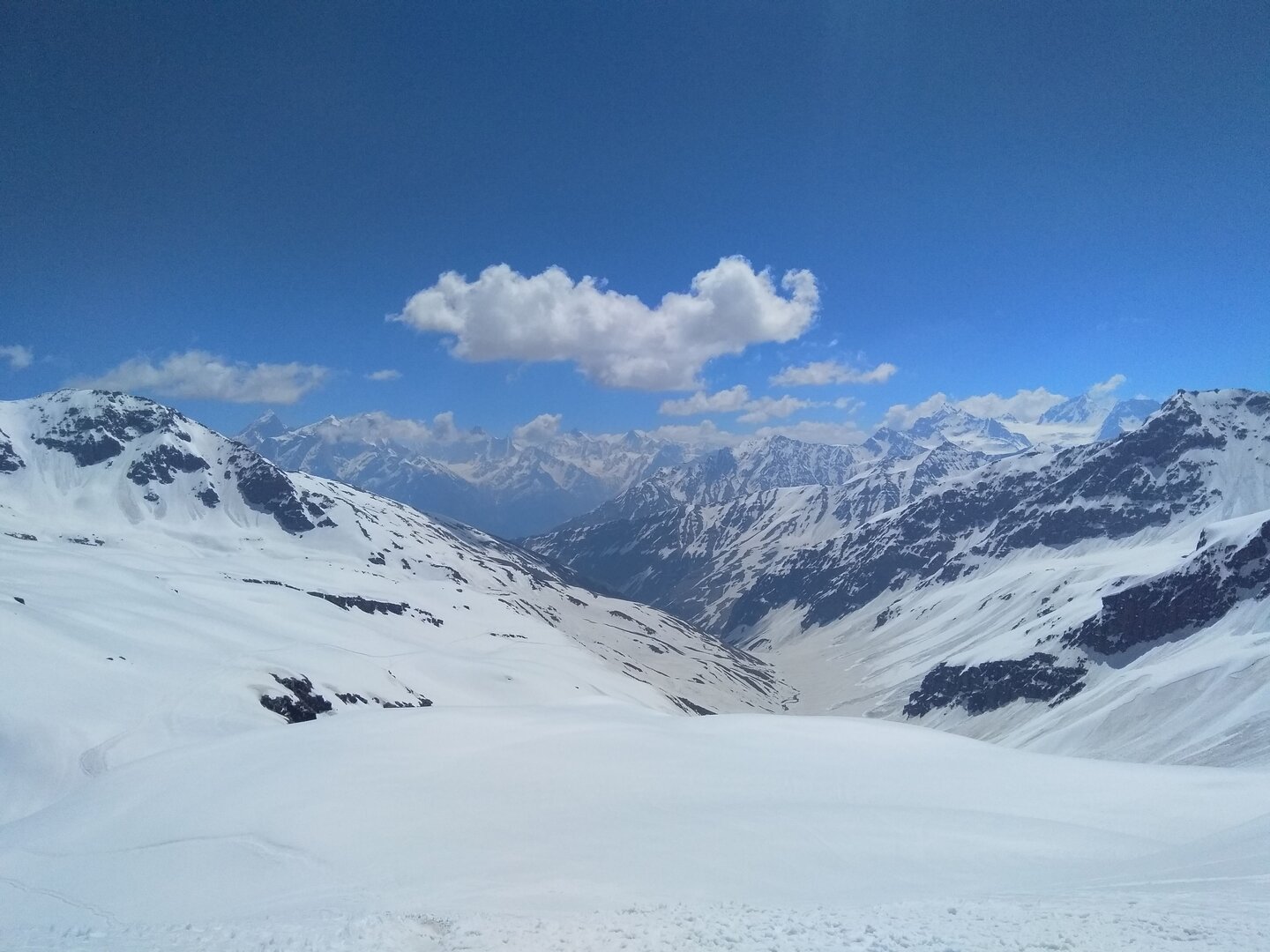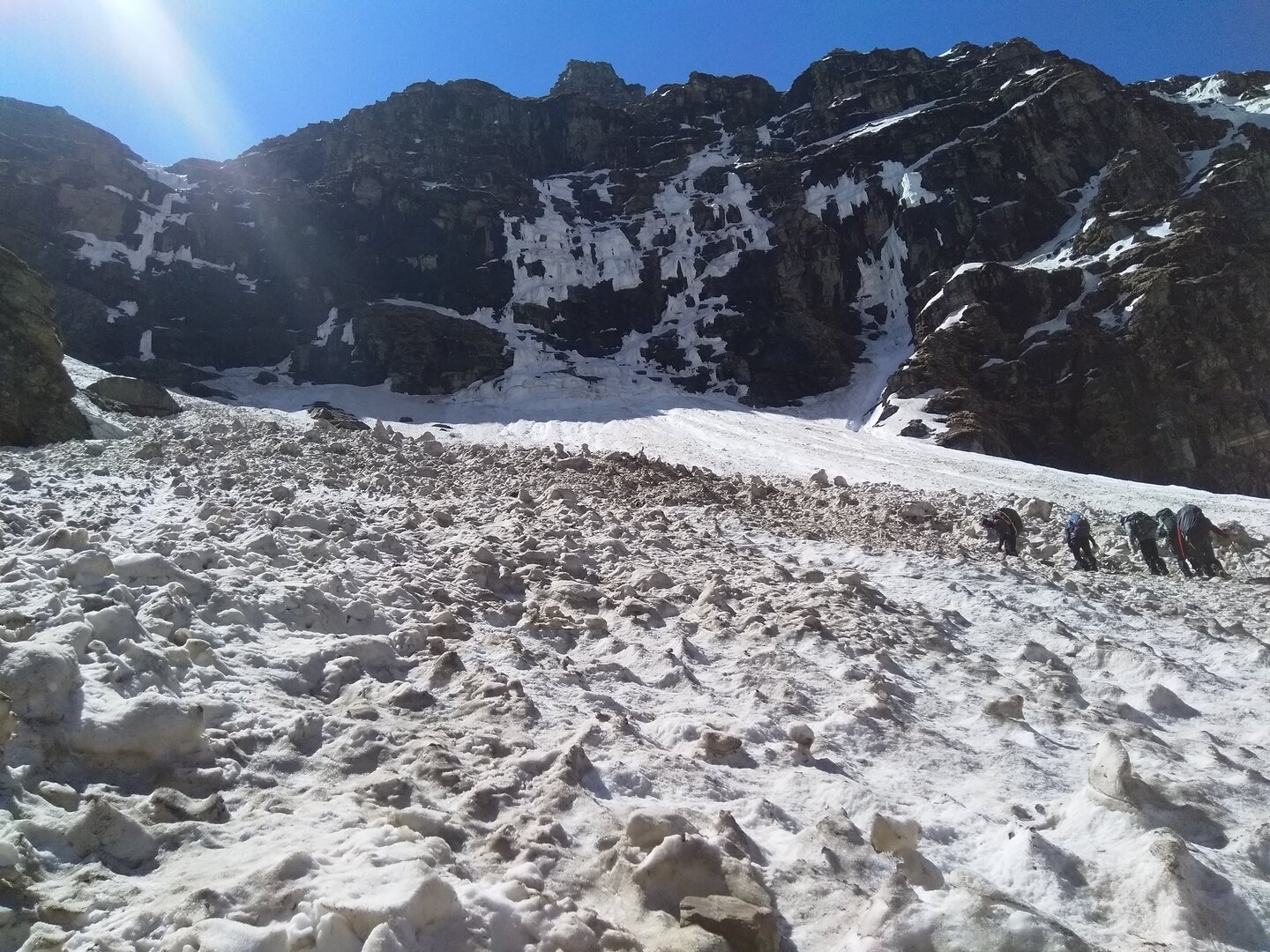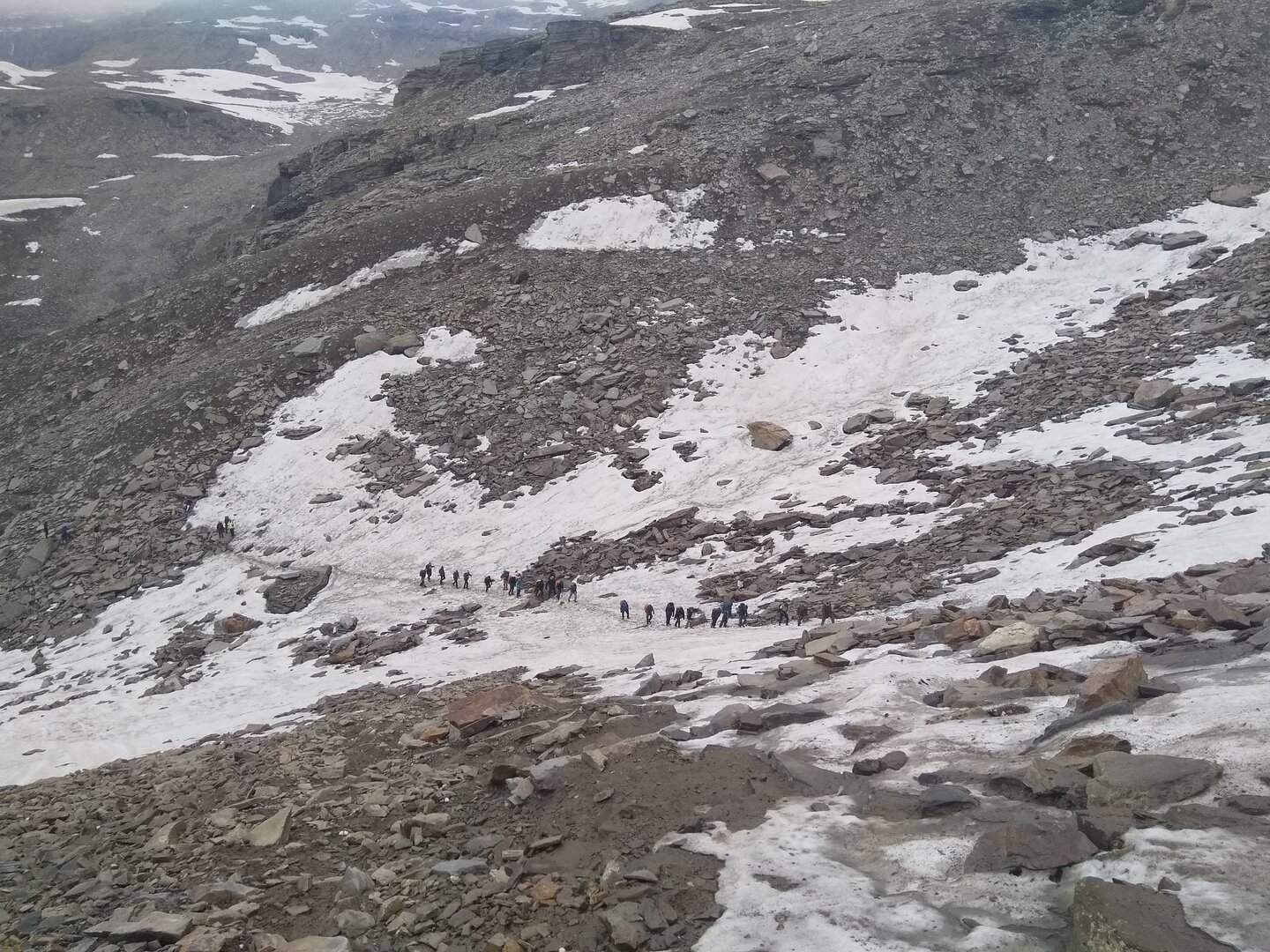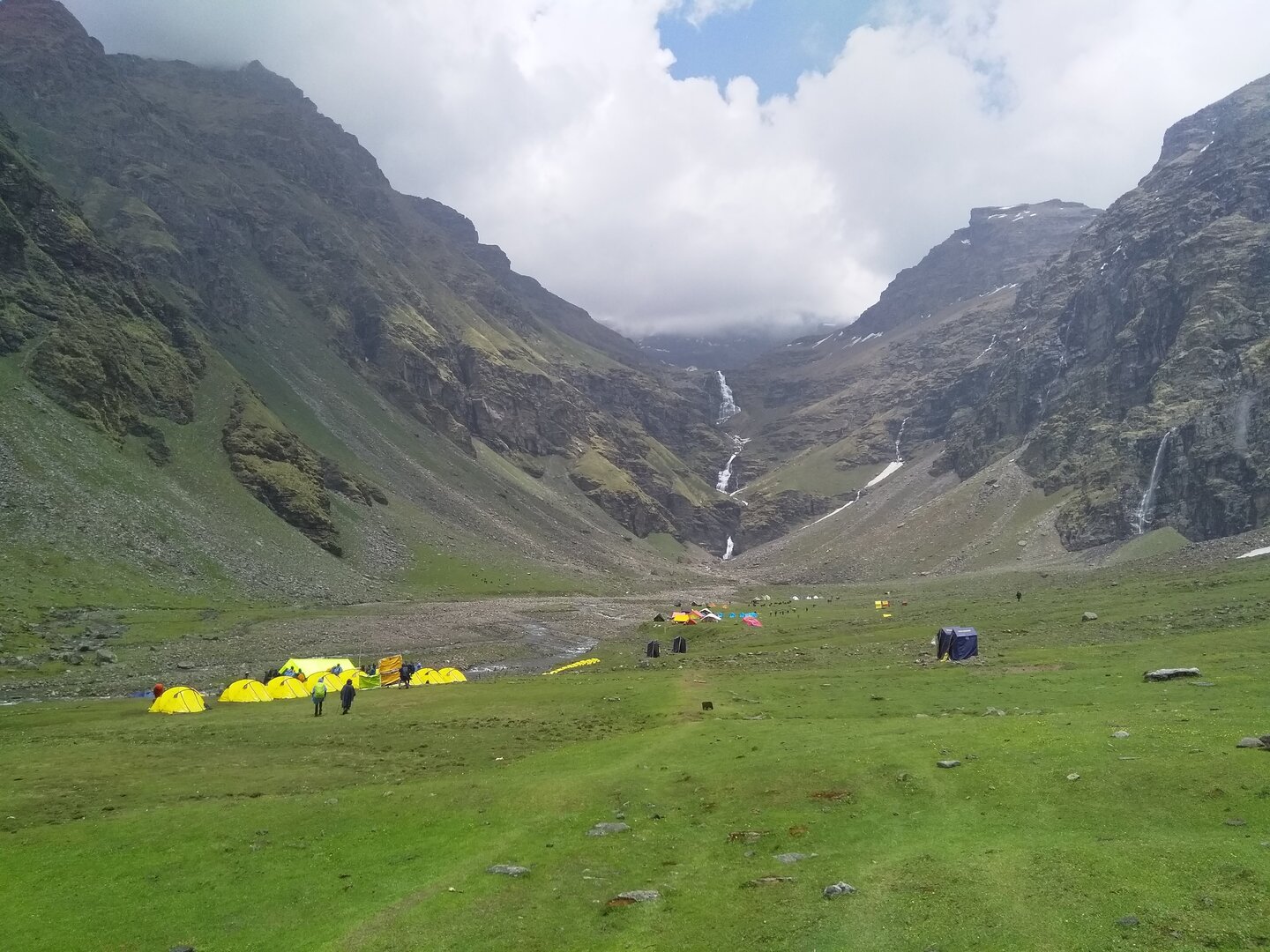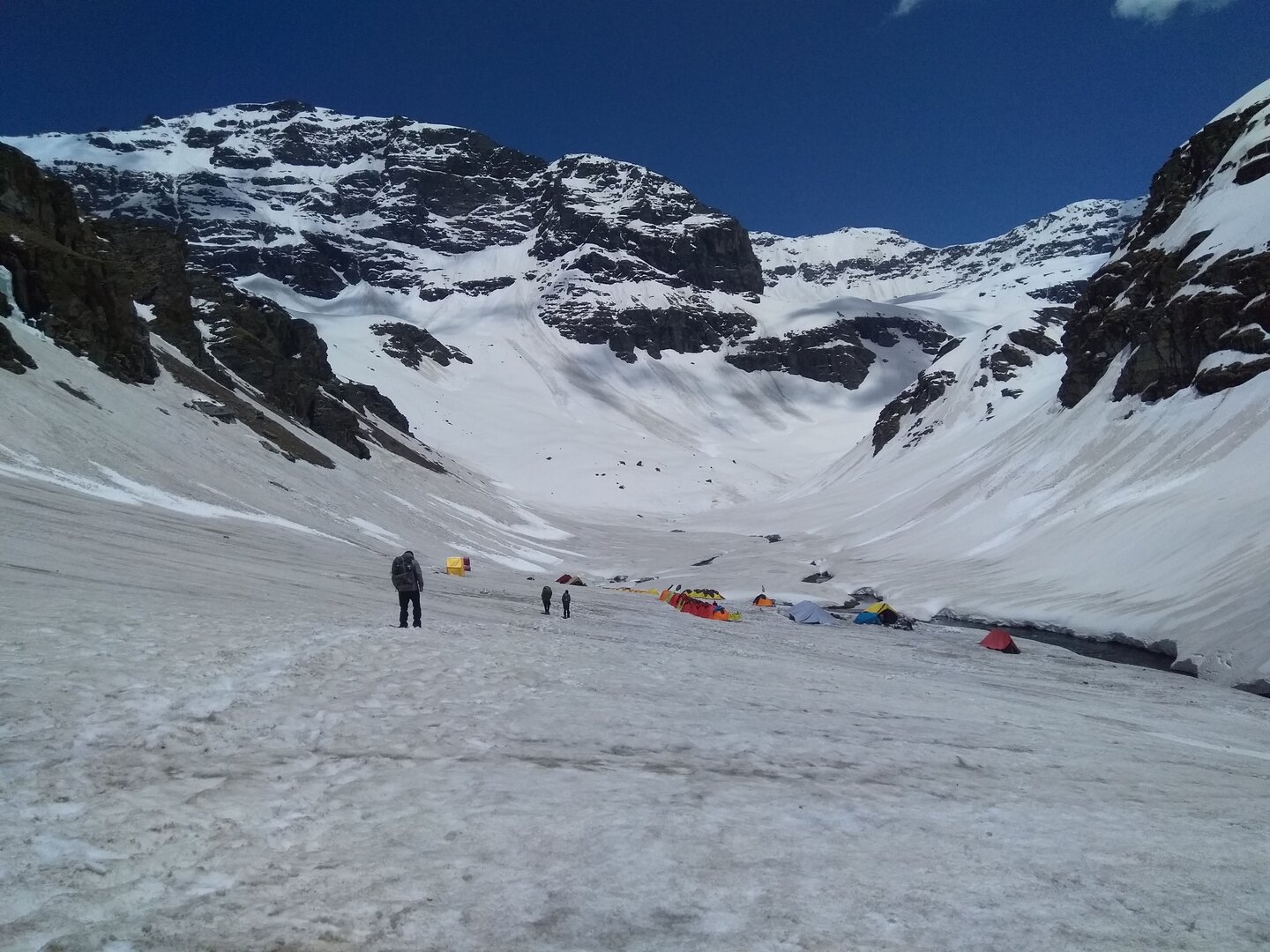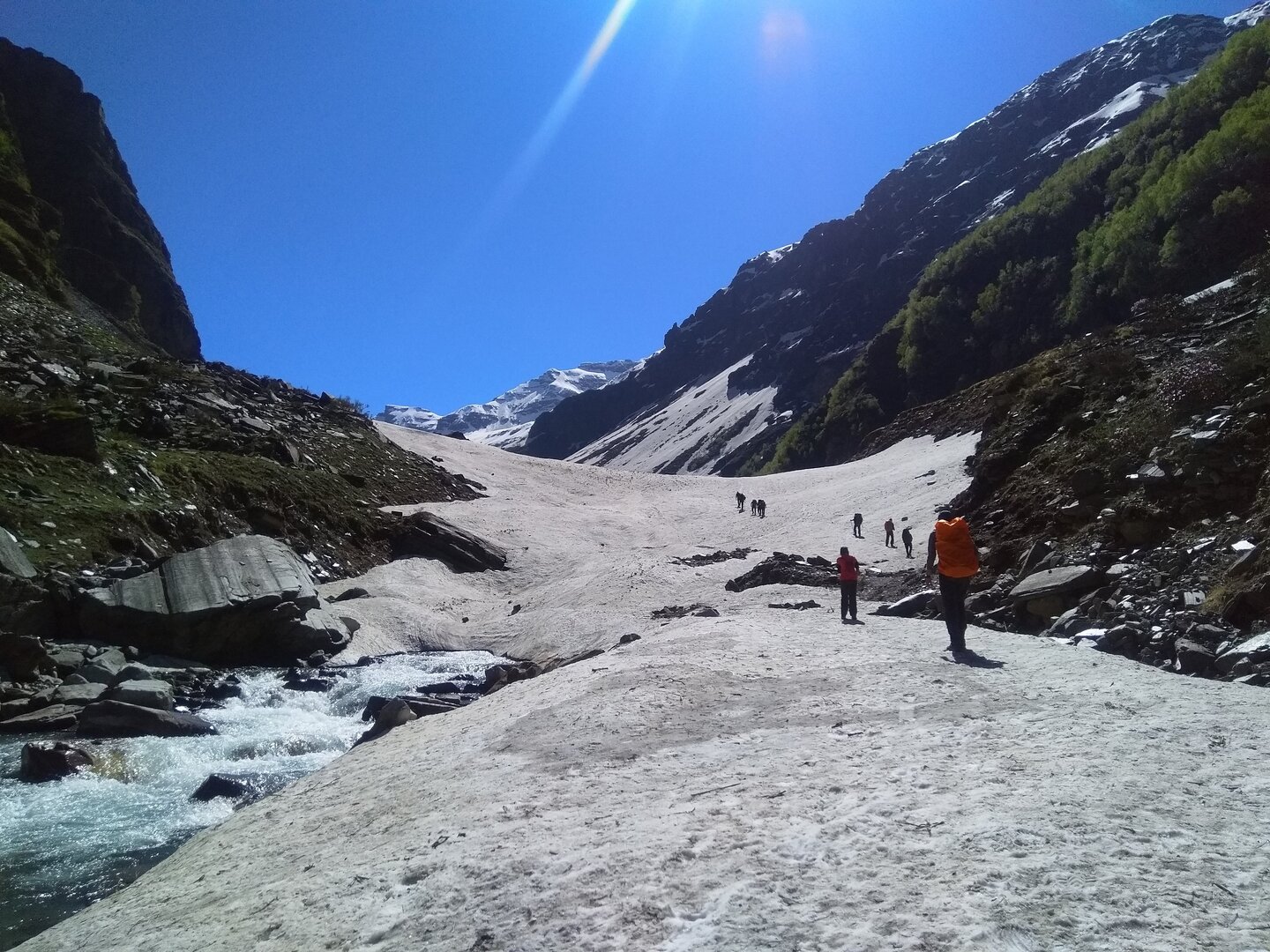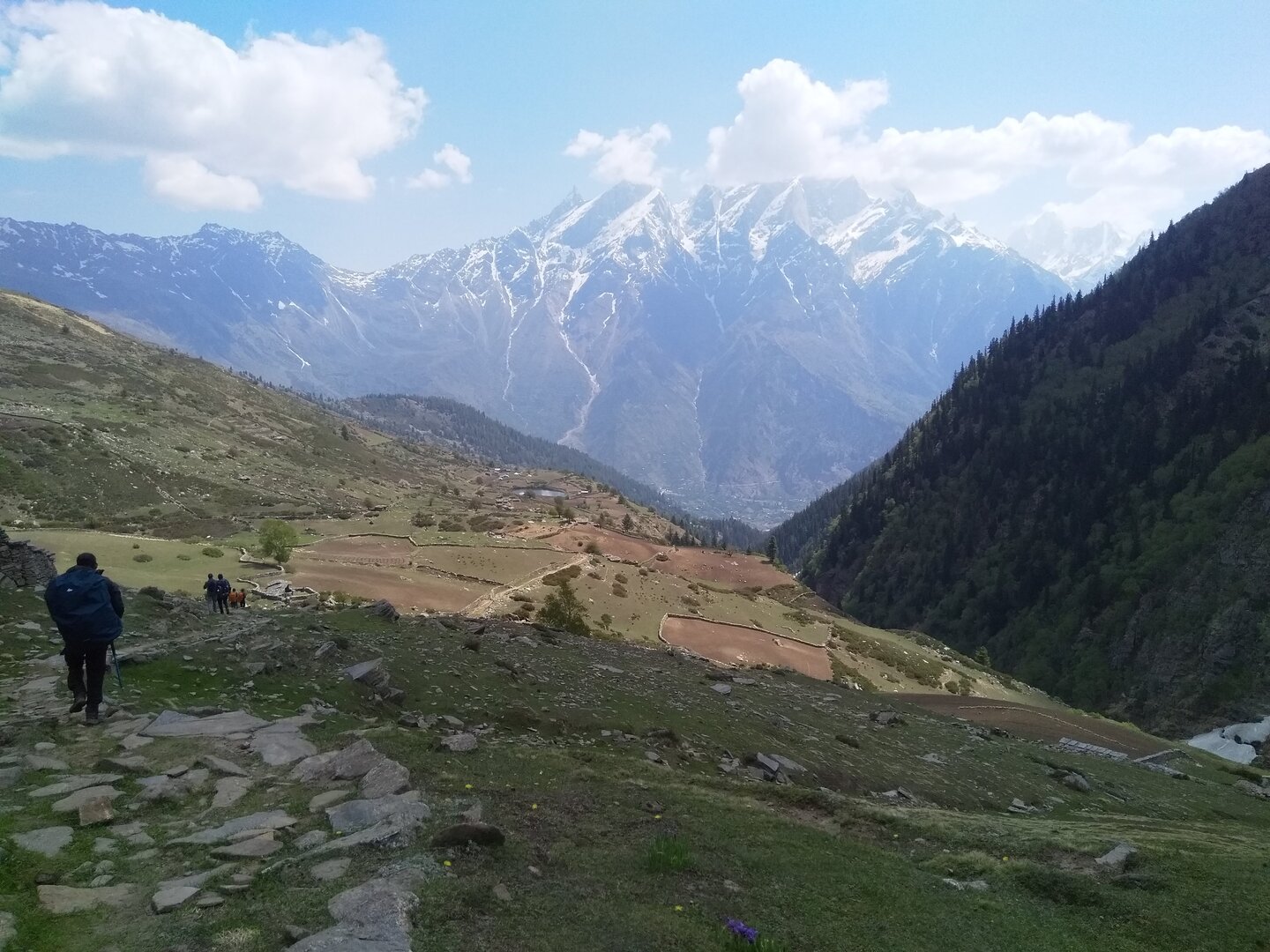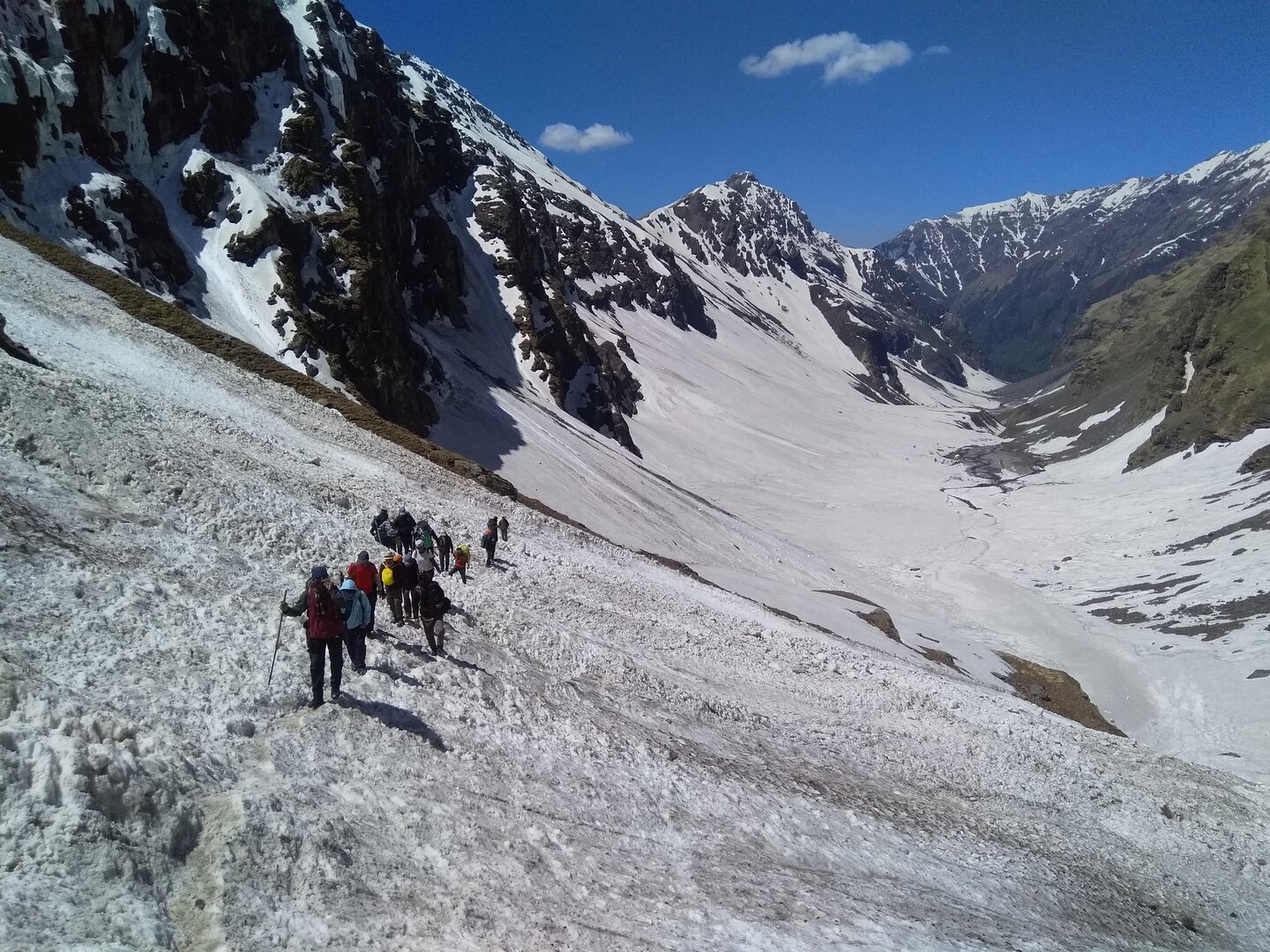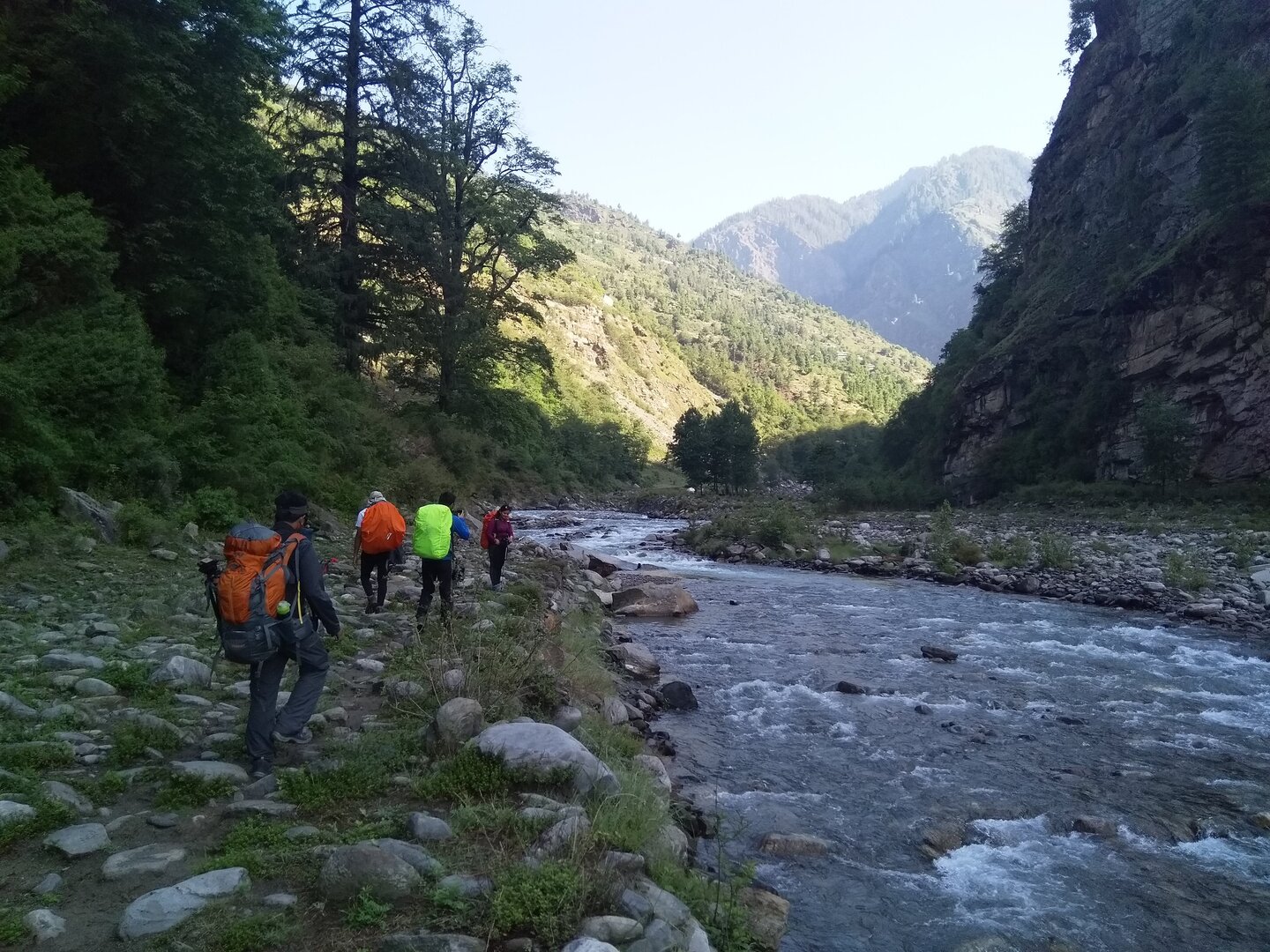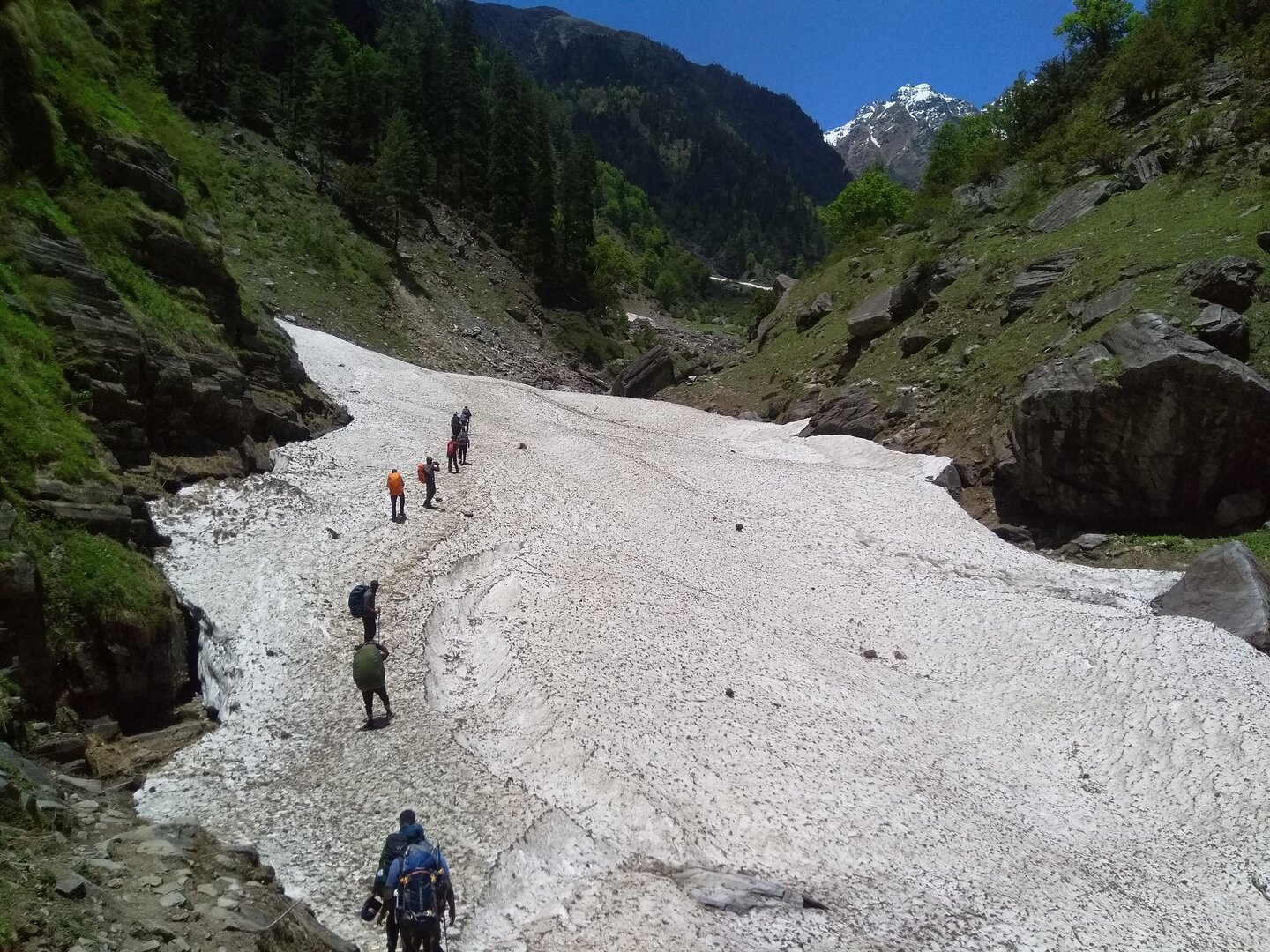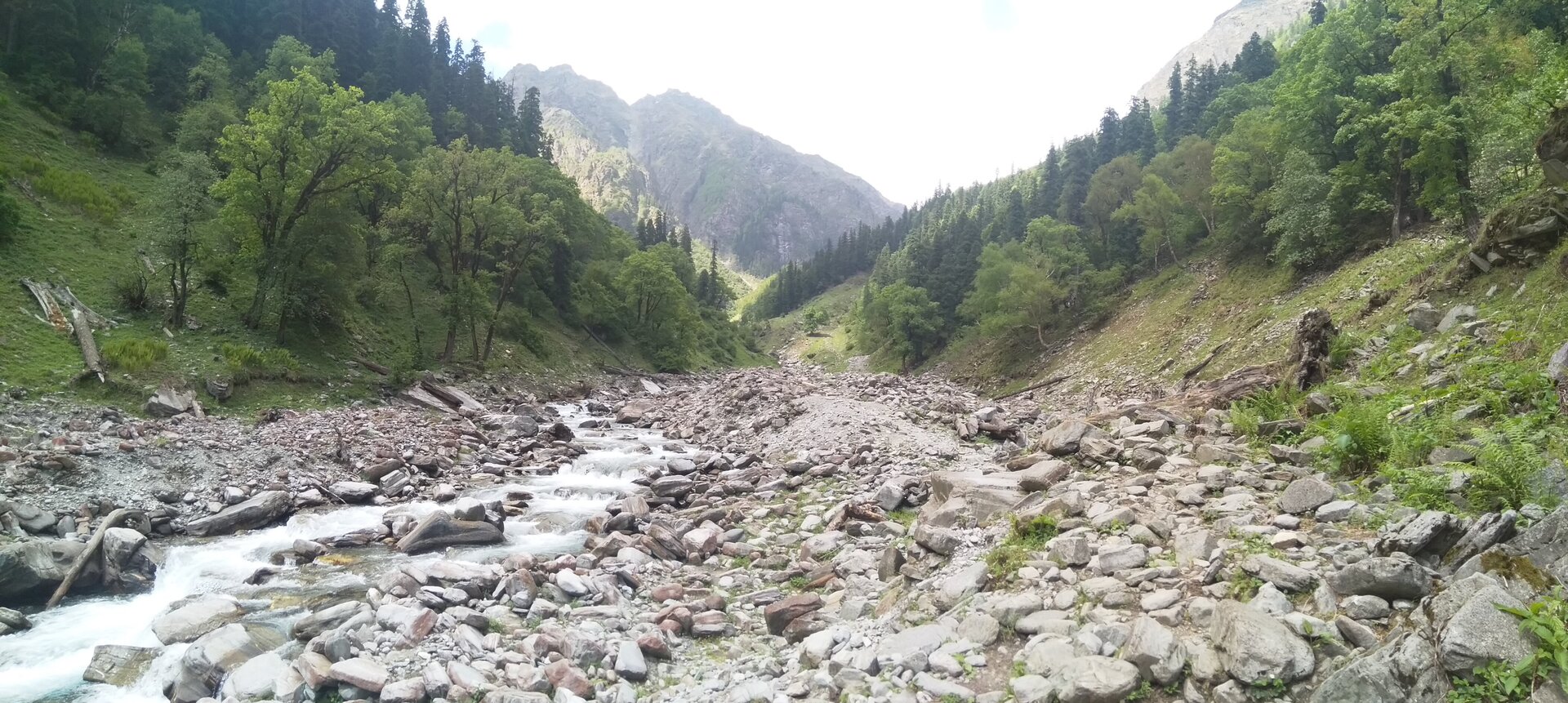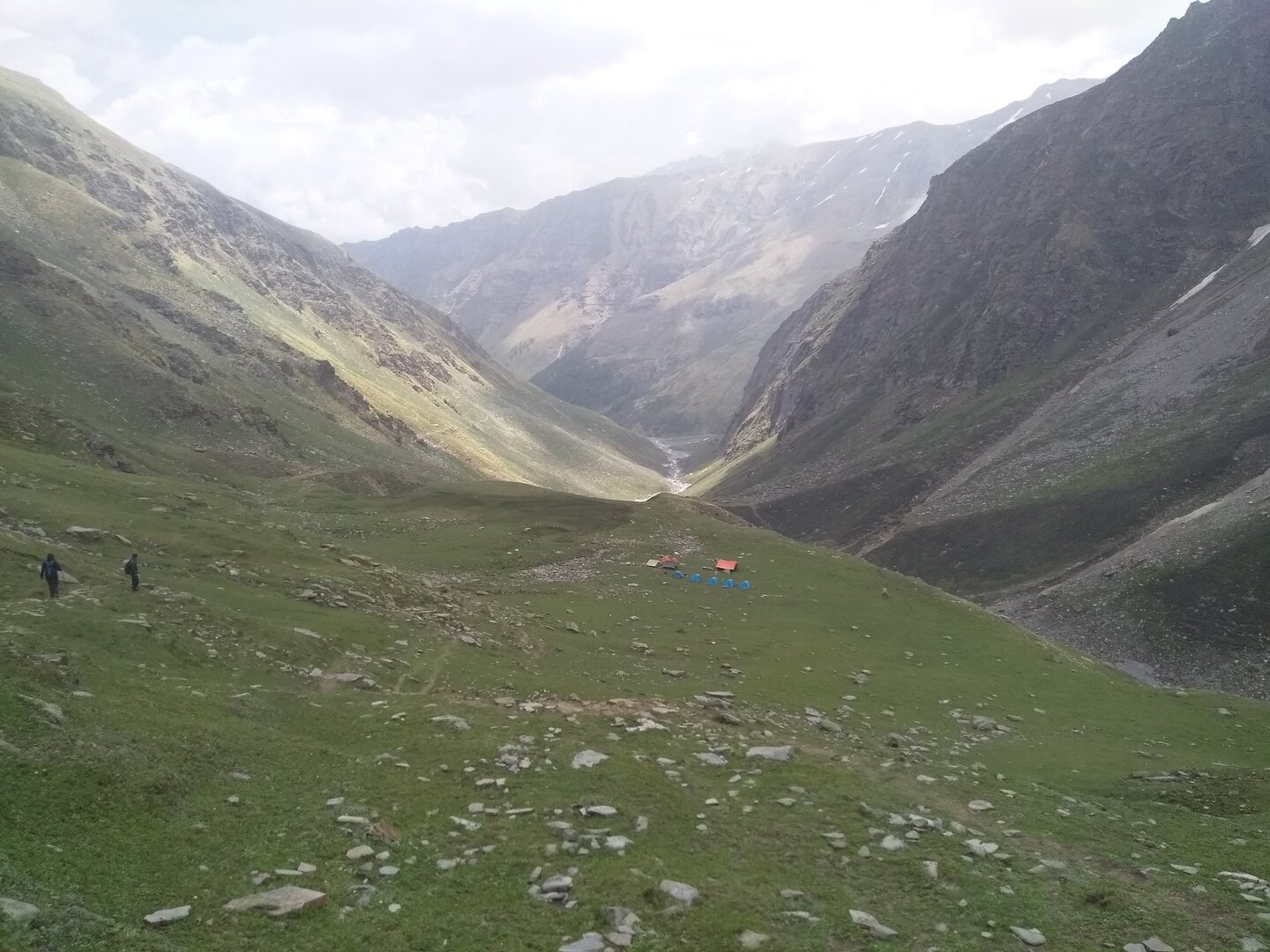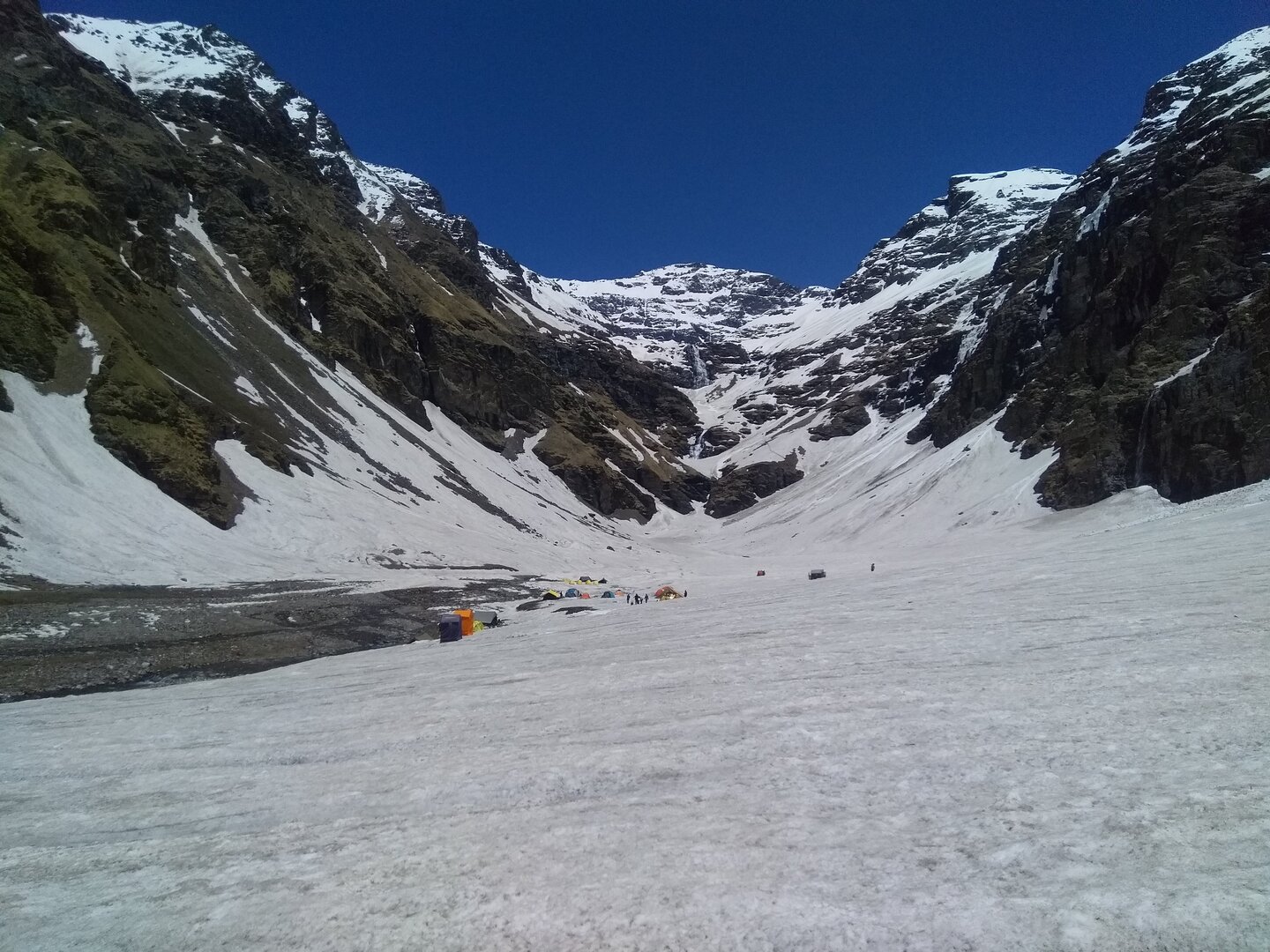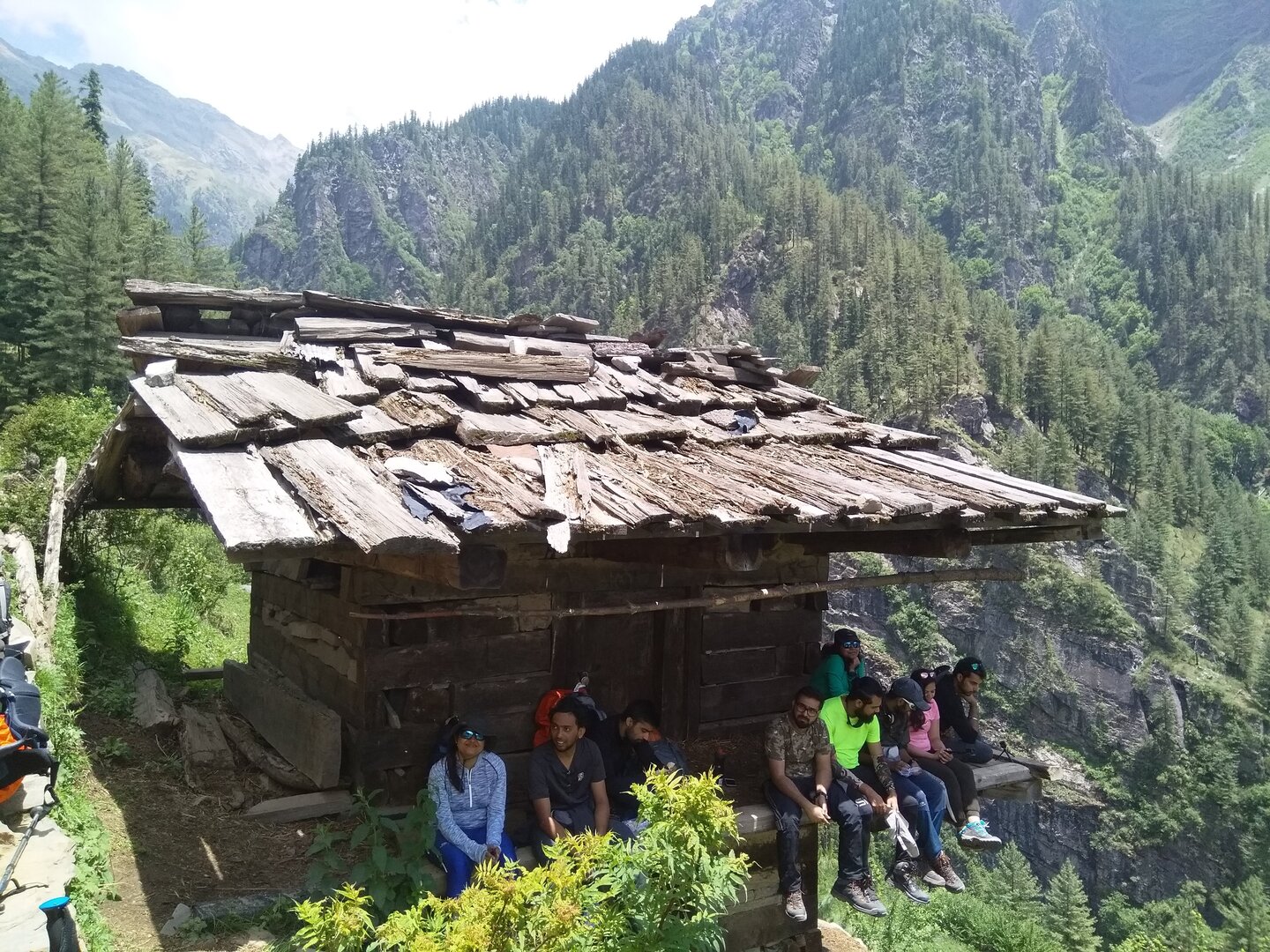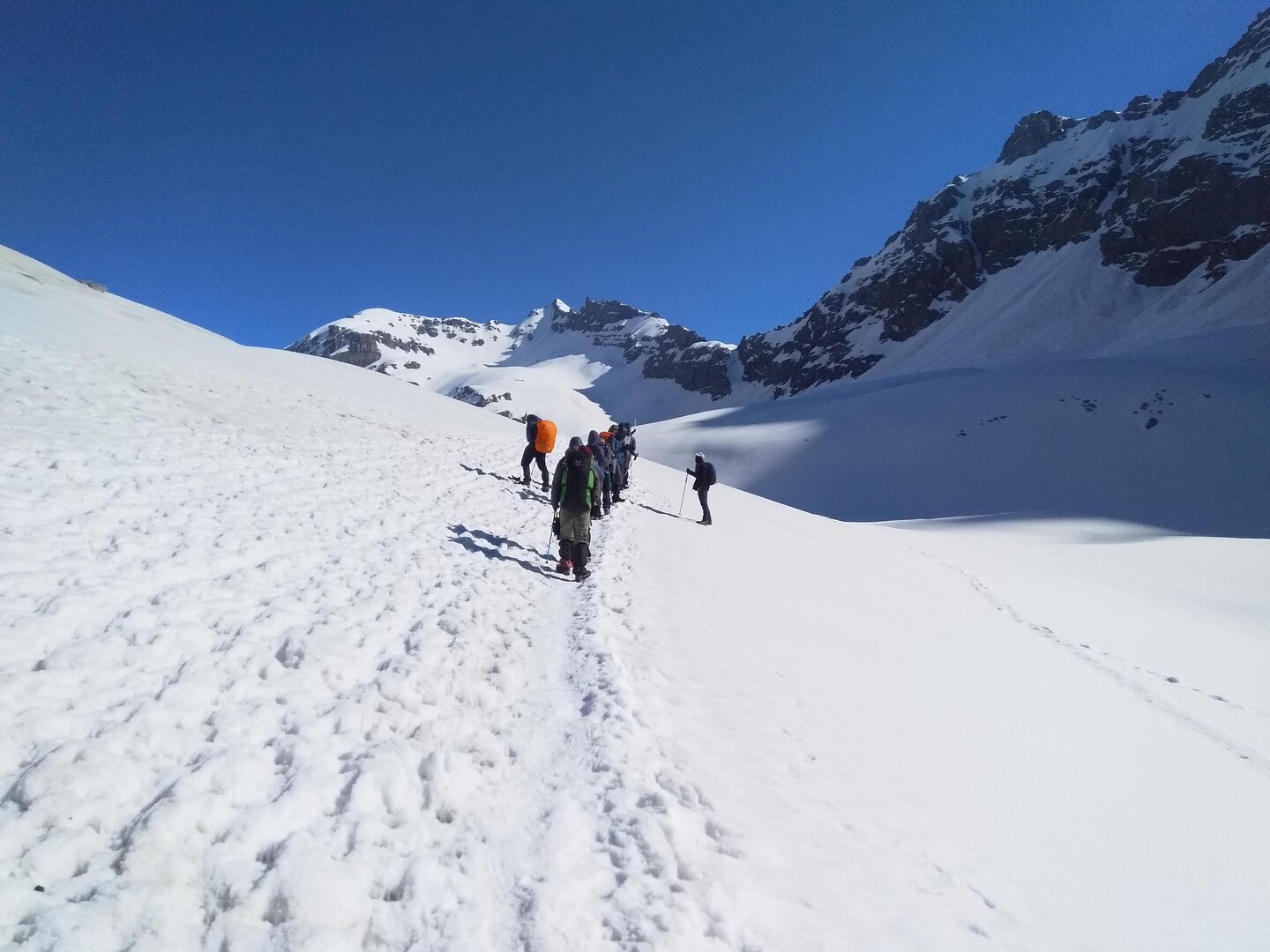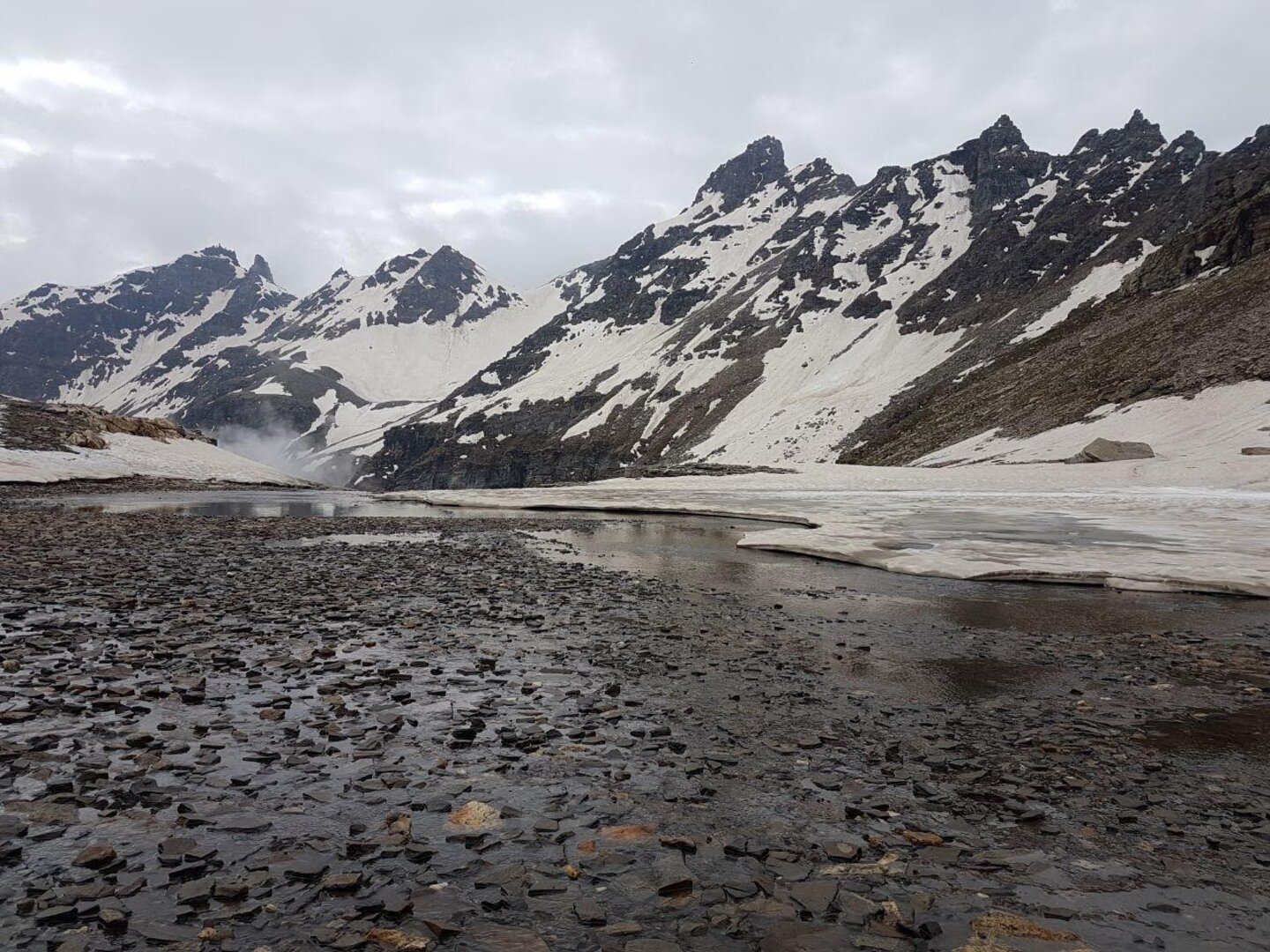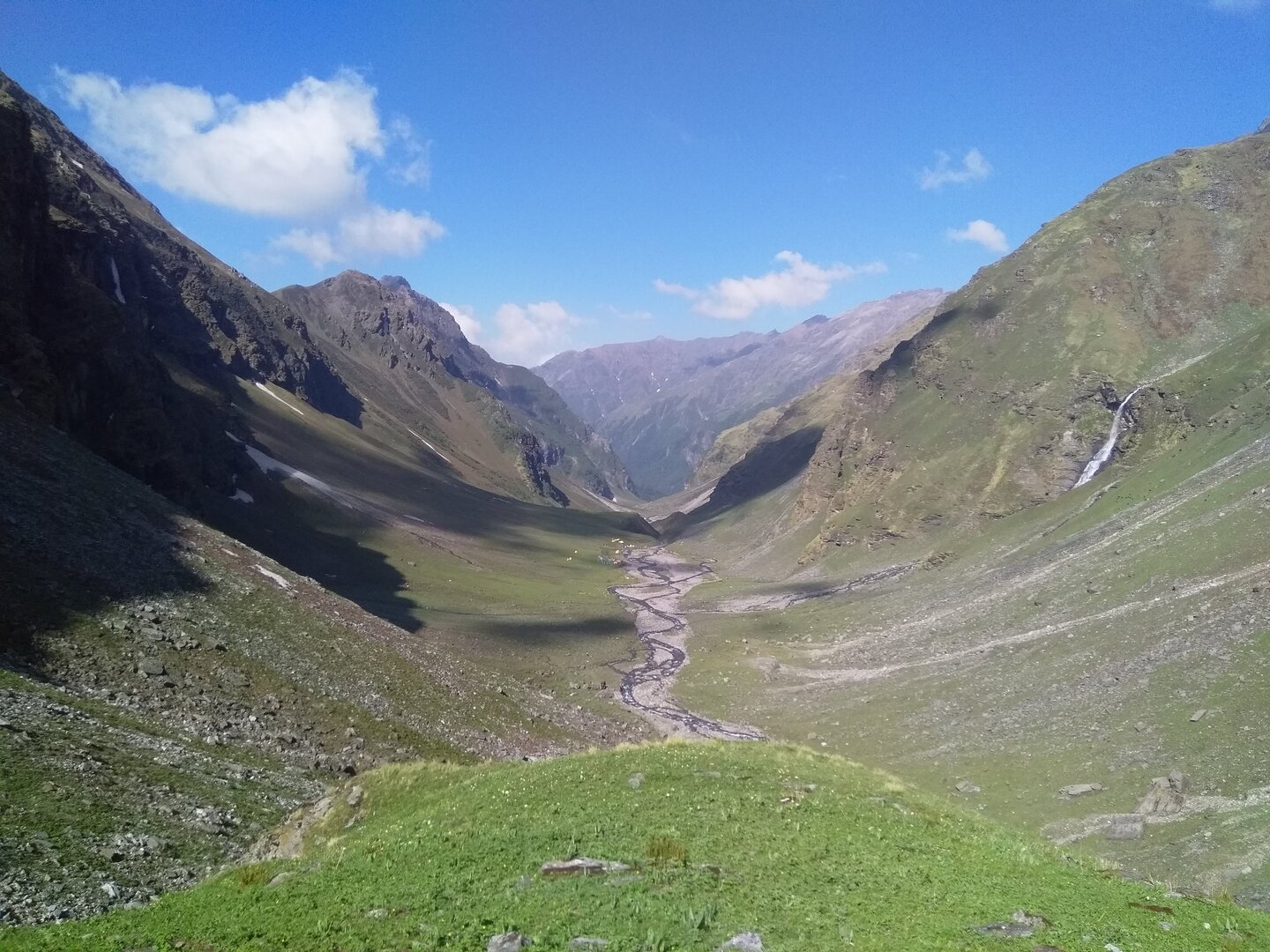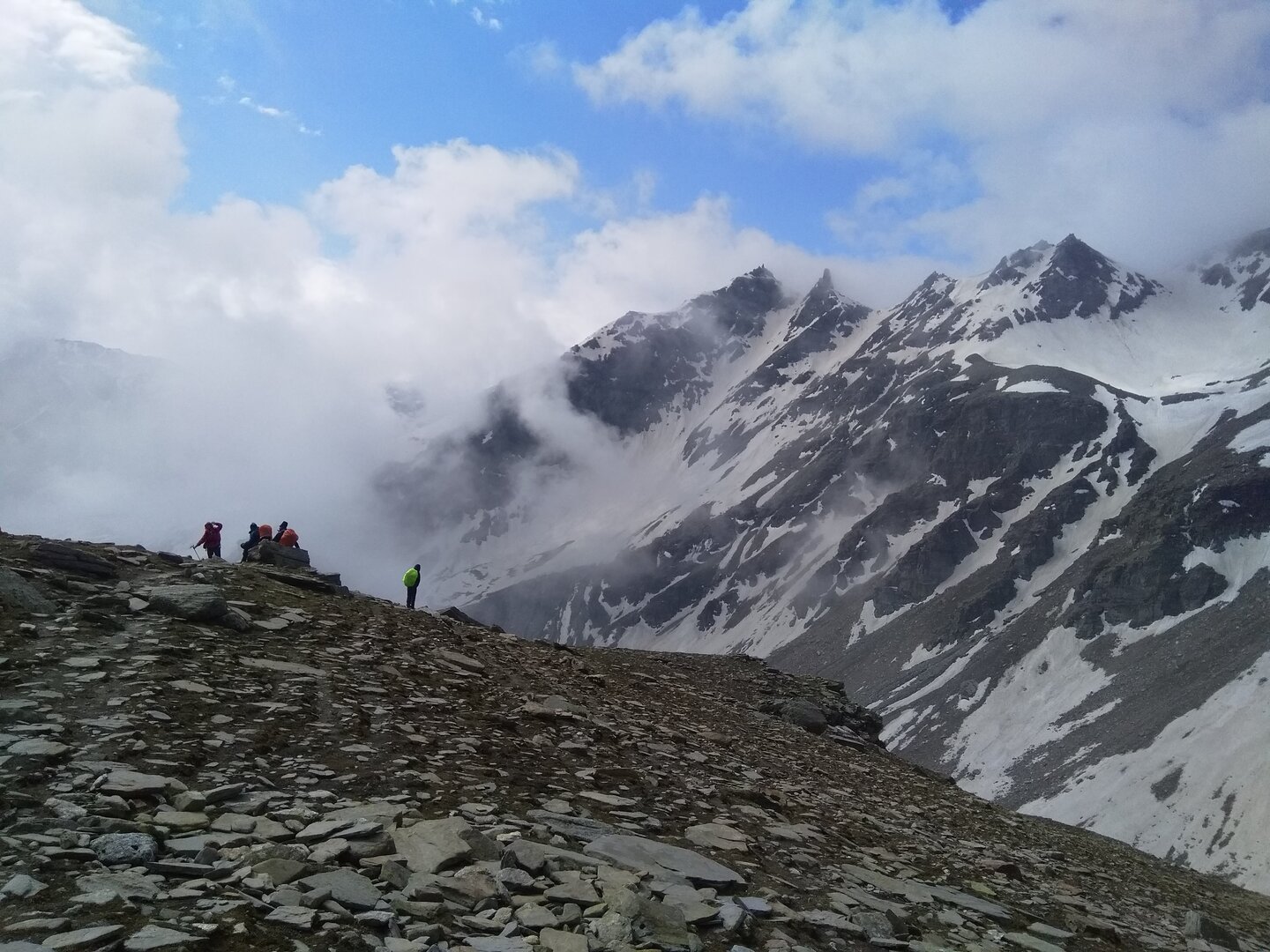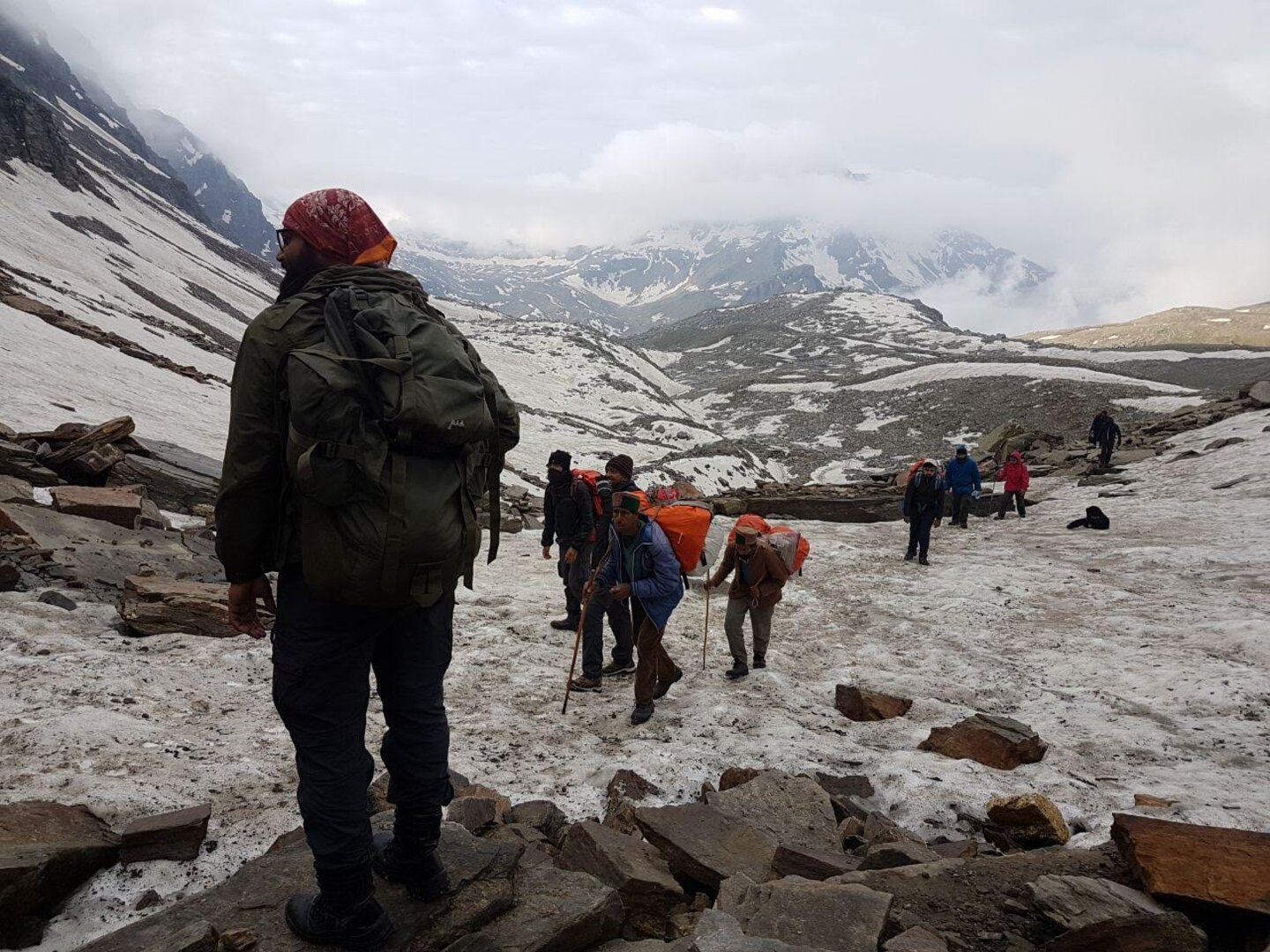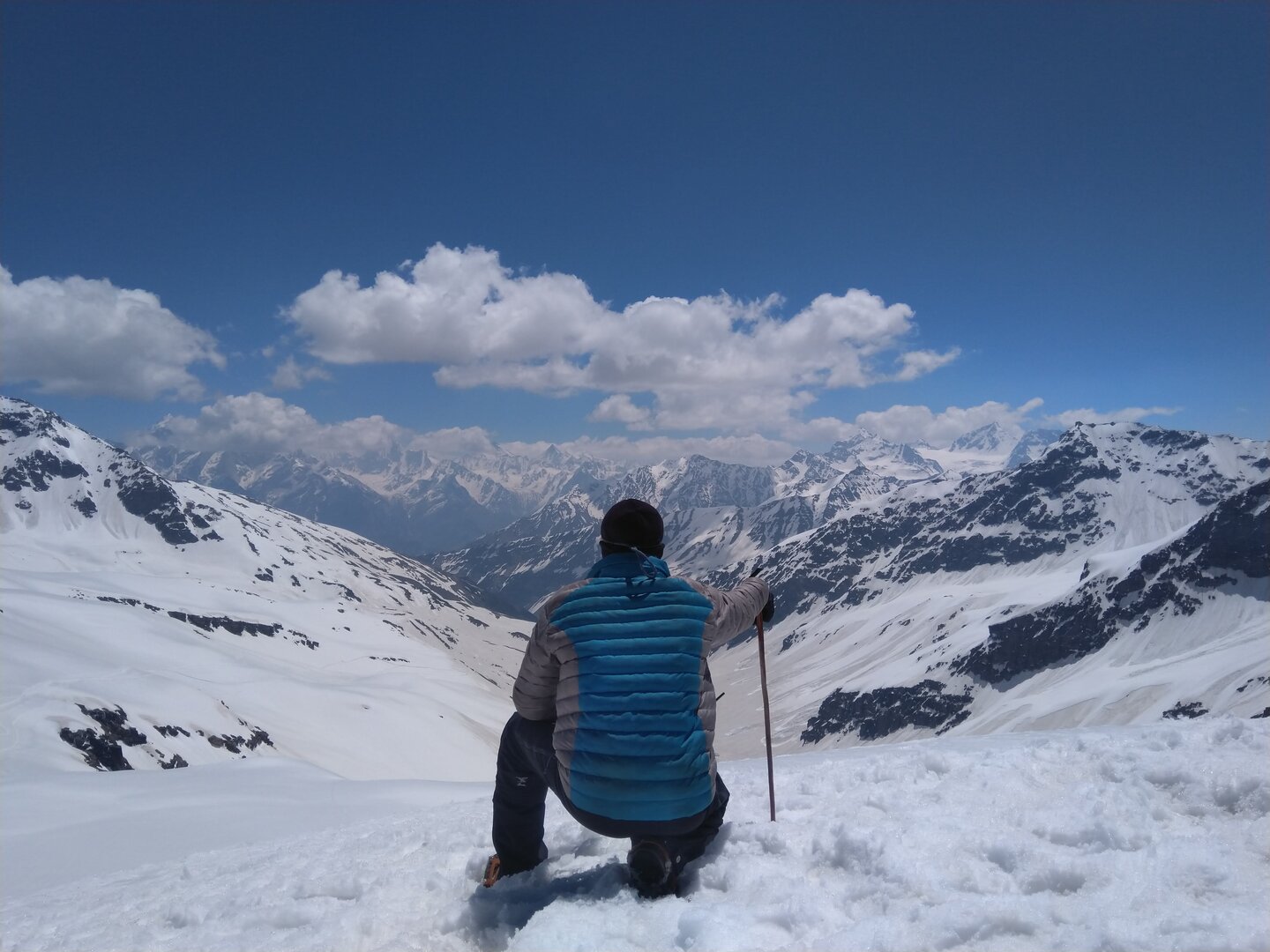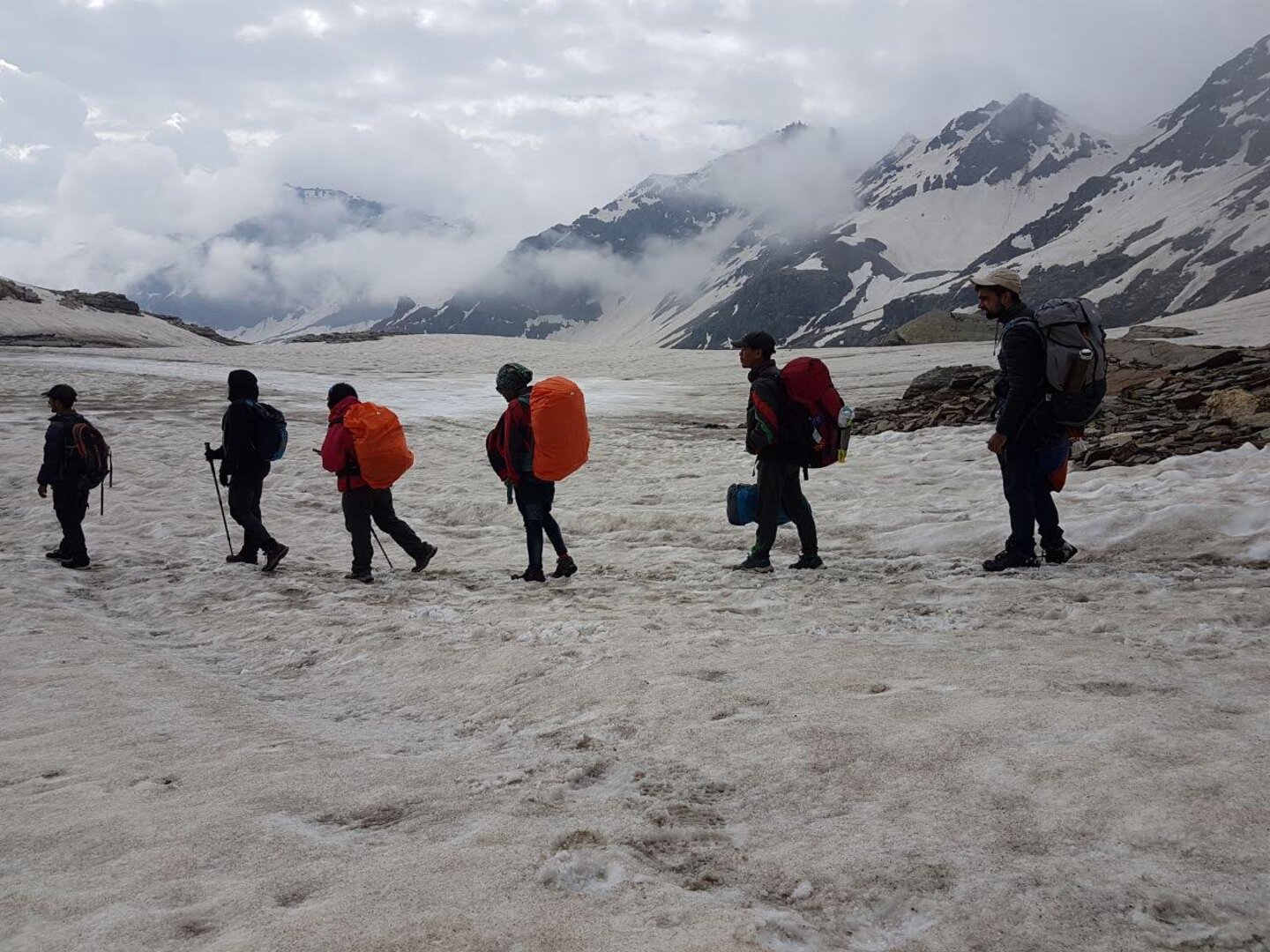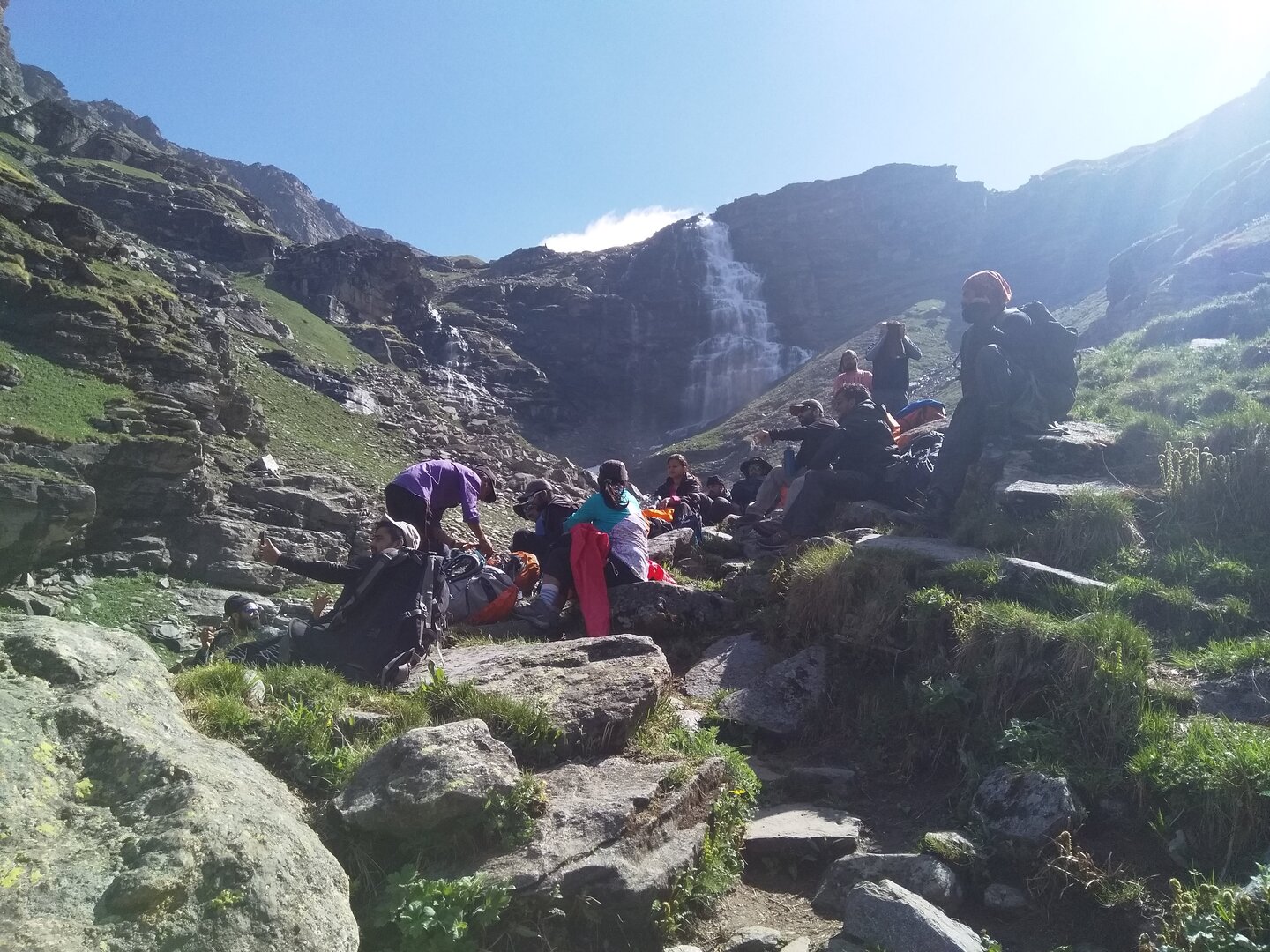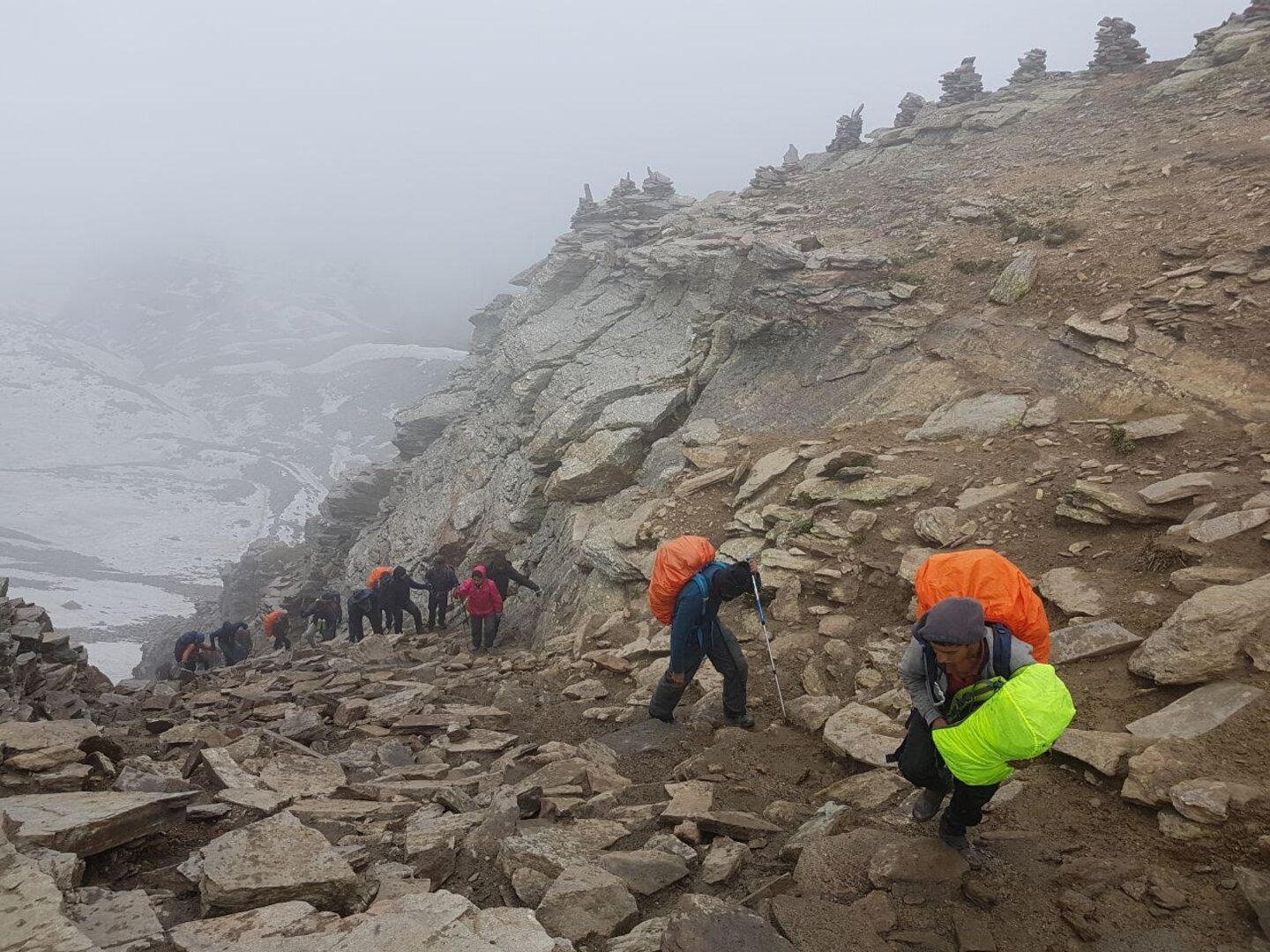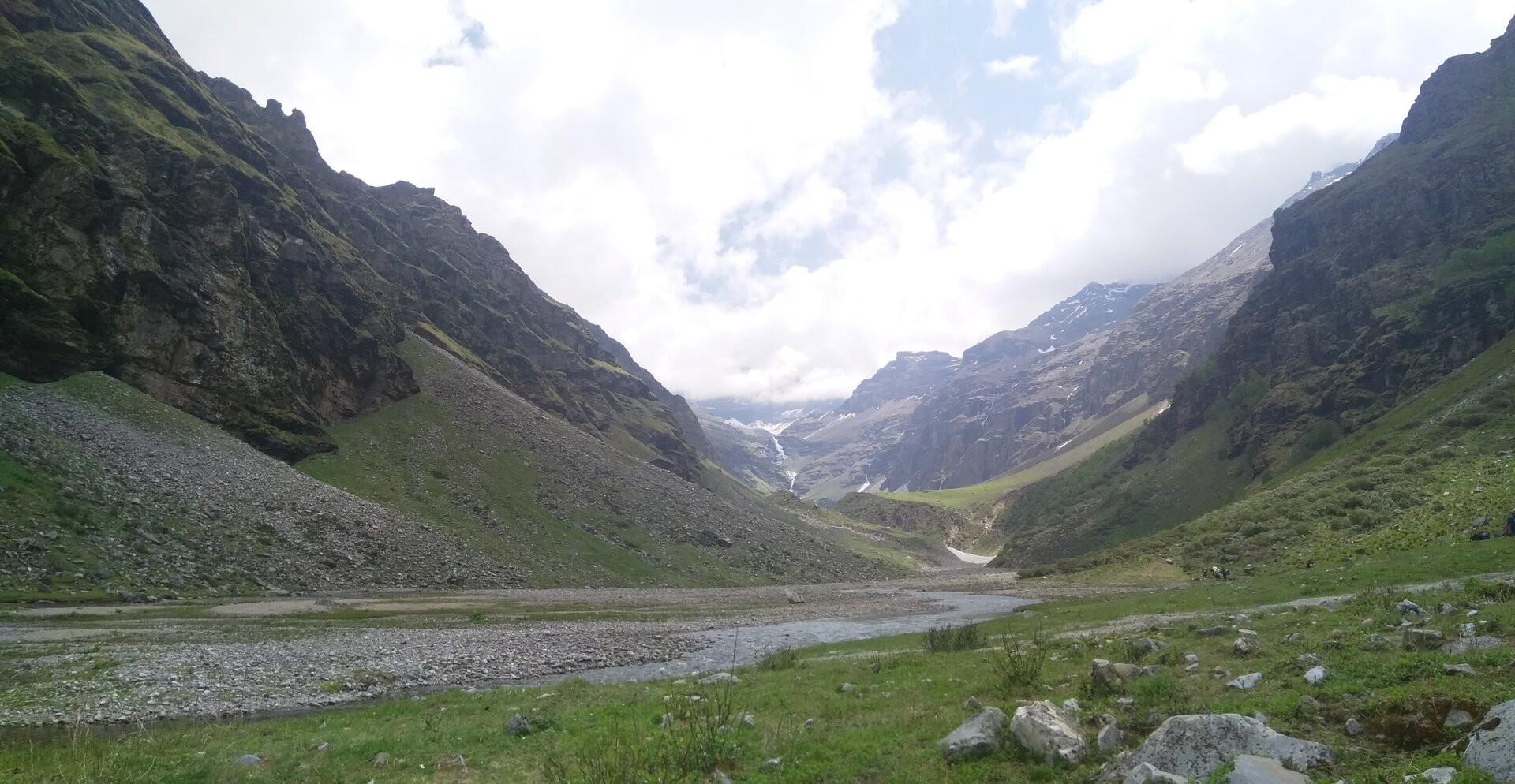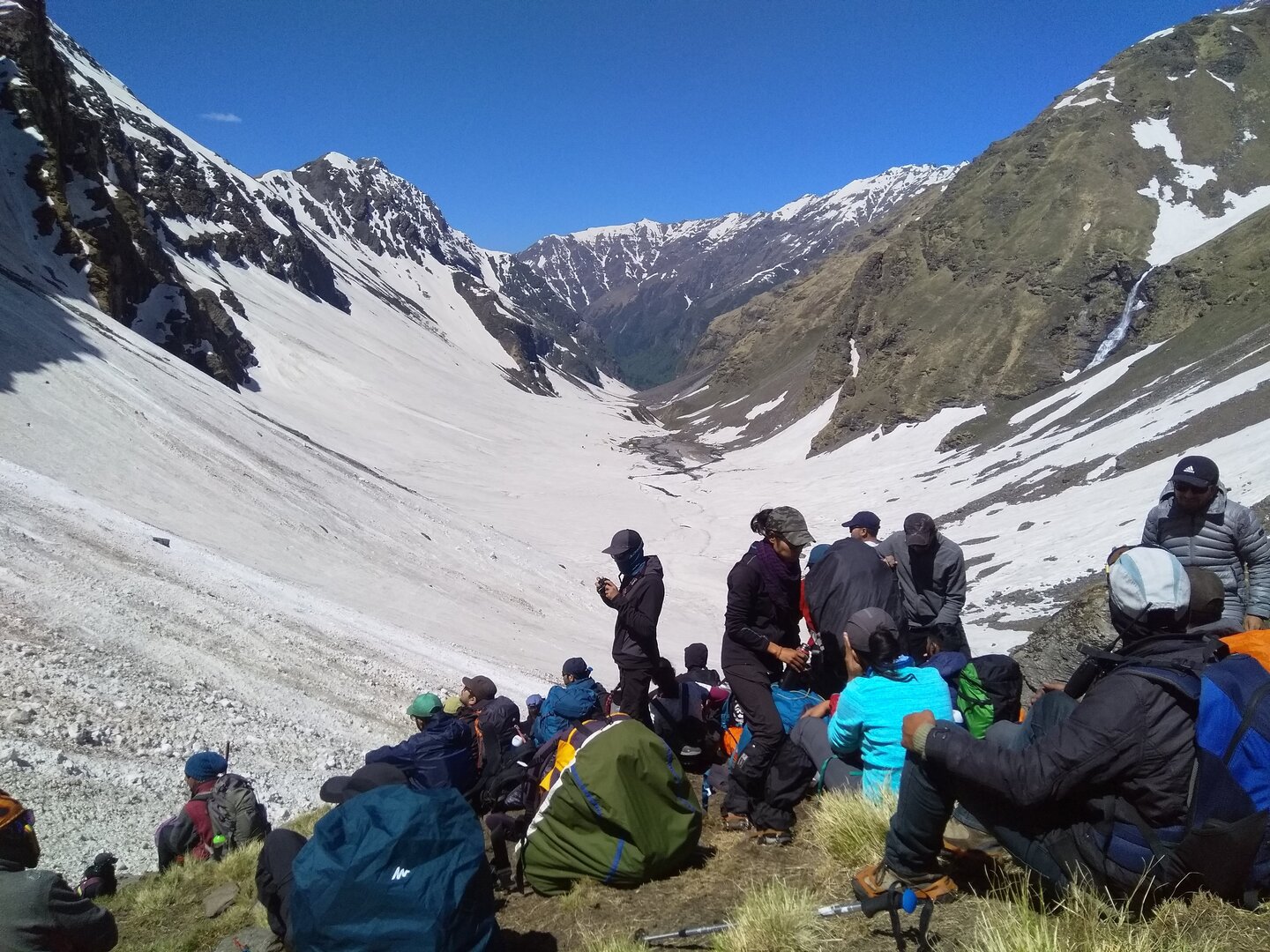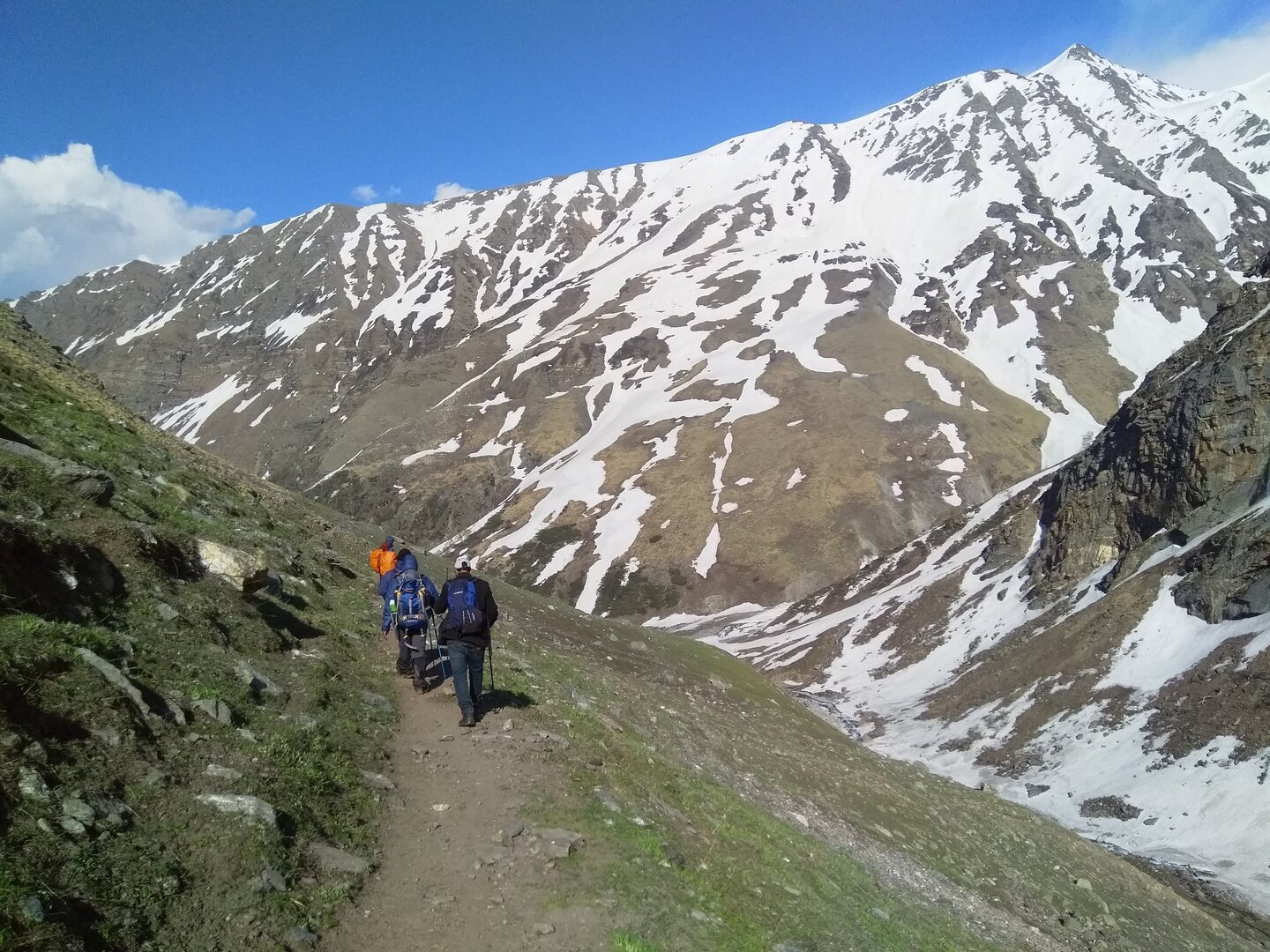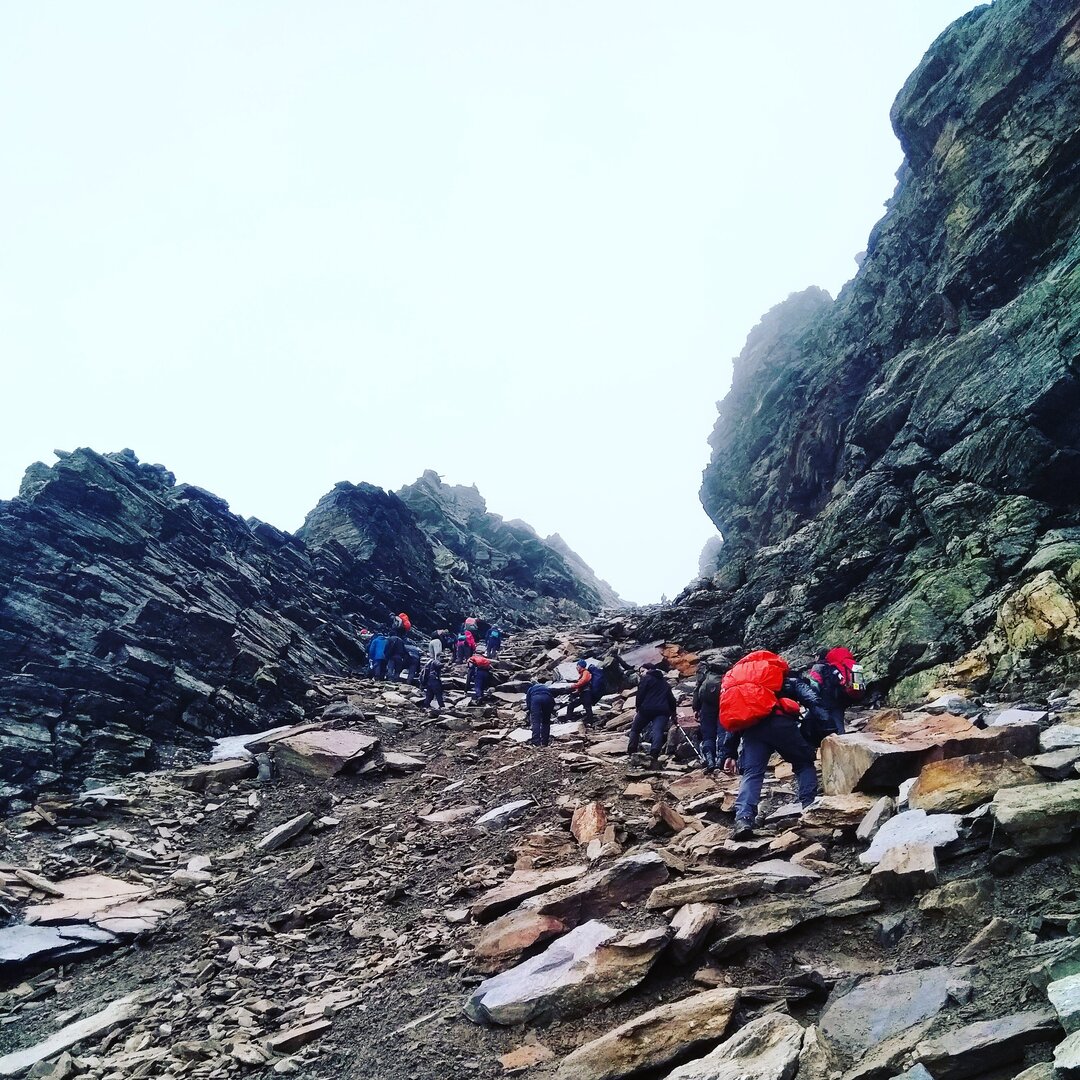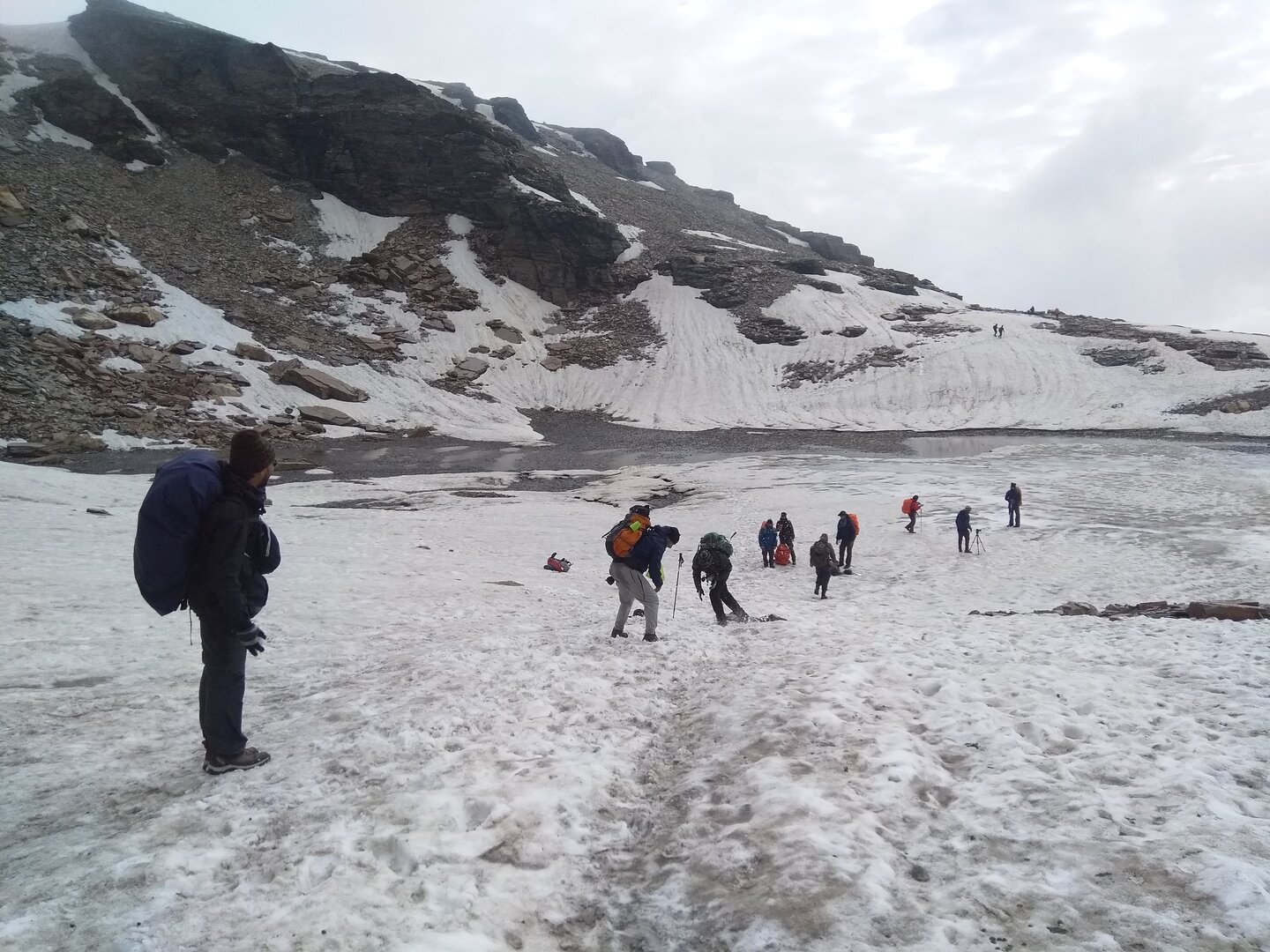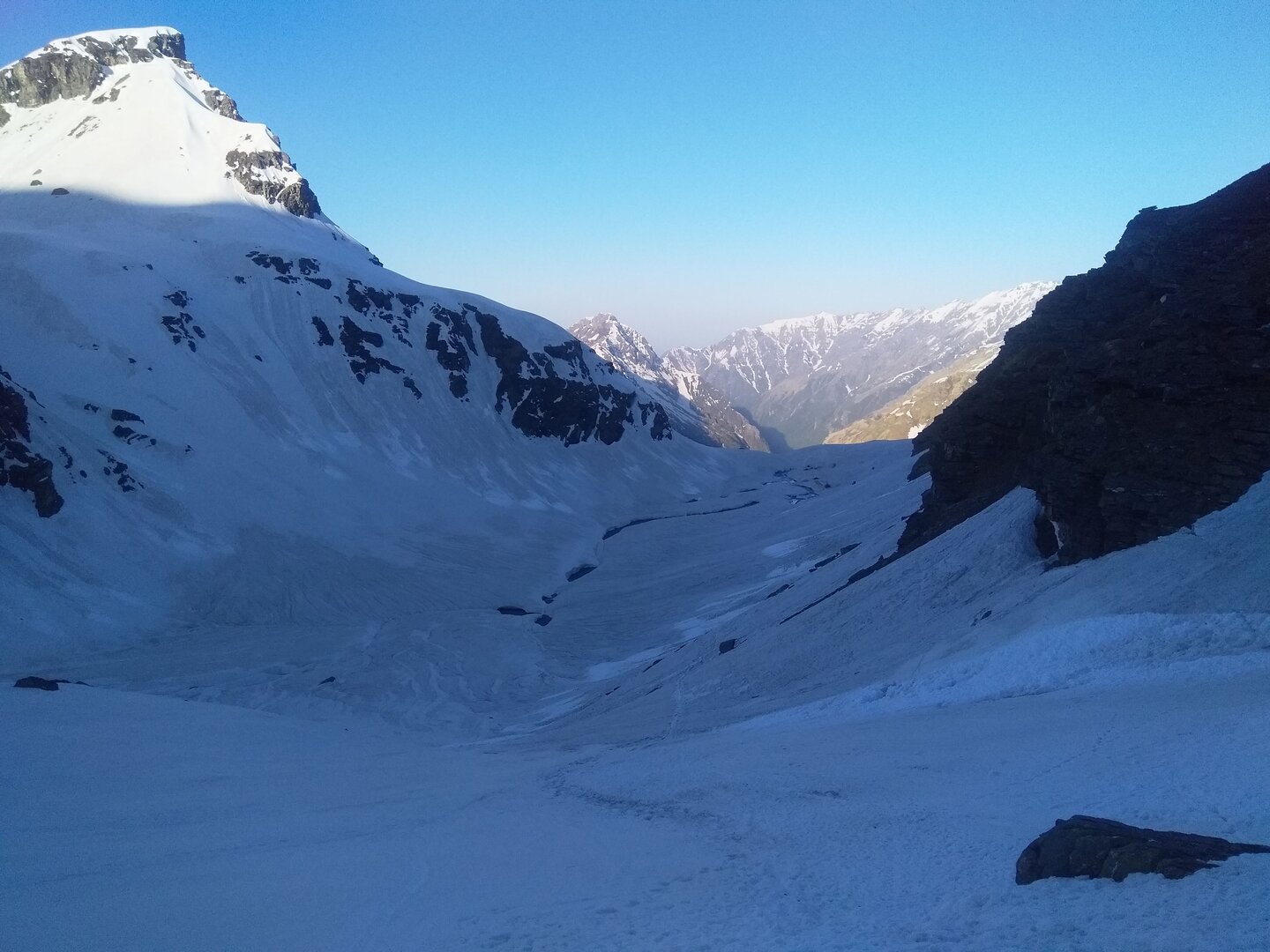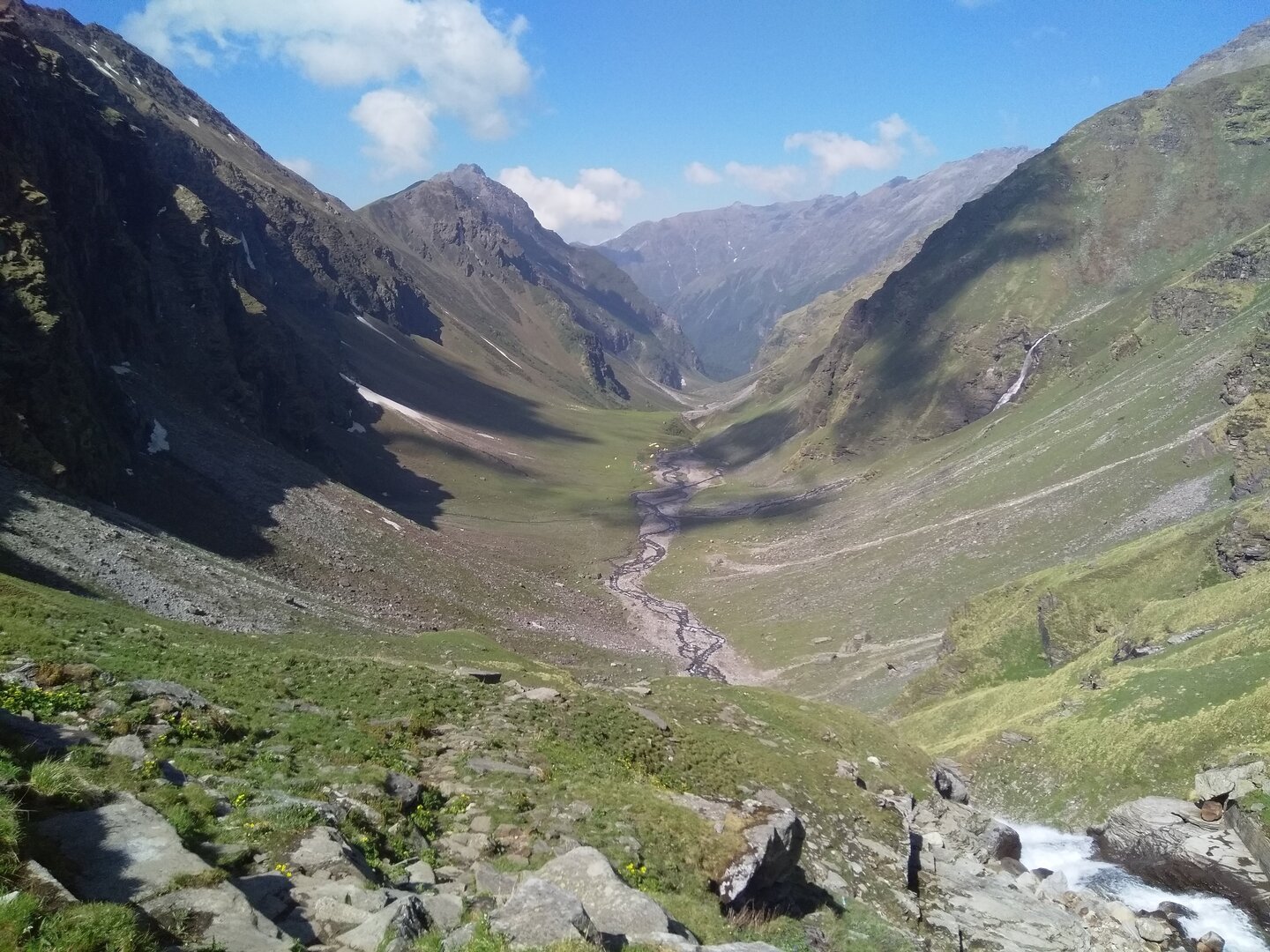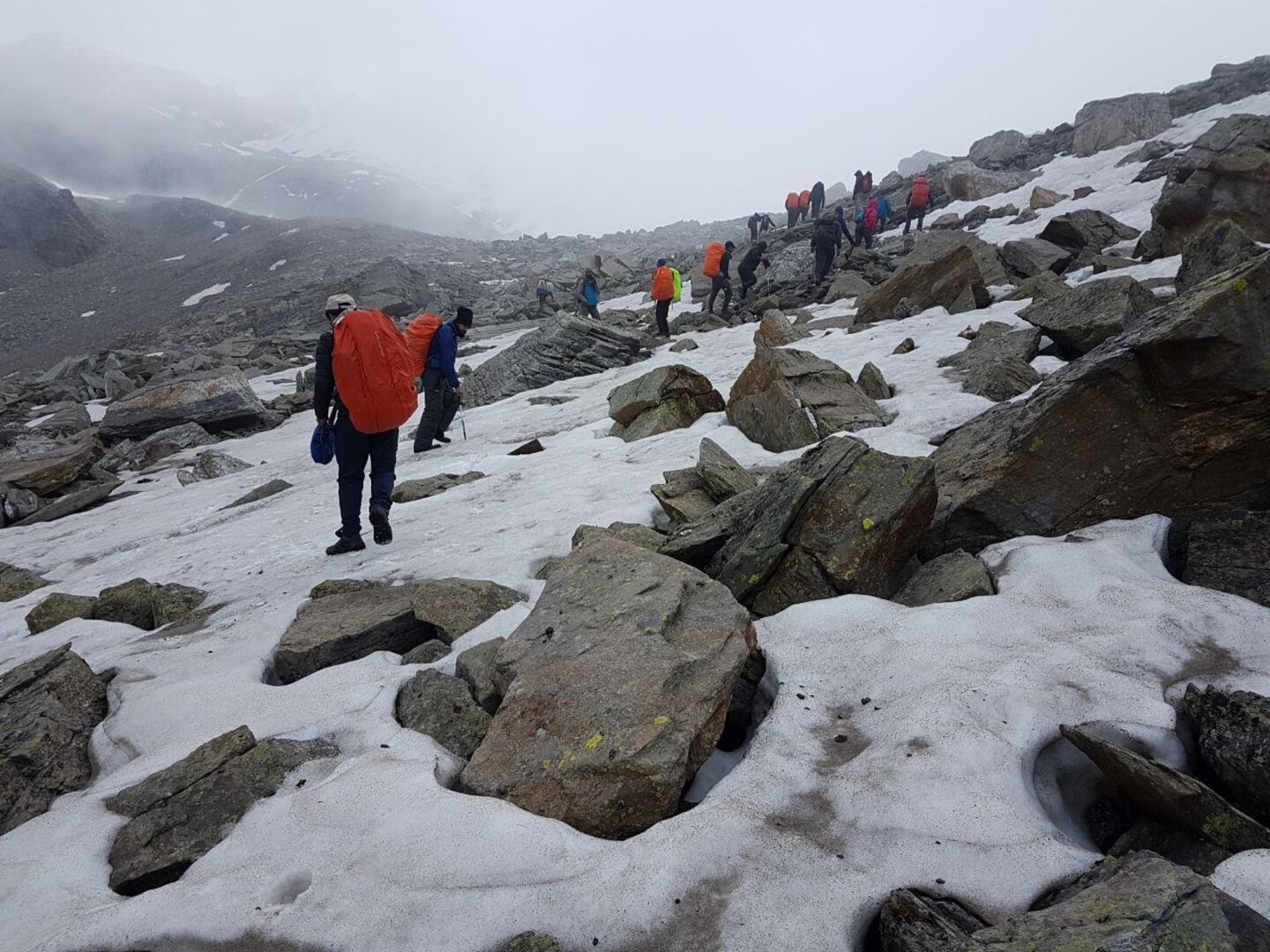📅 Day 1: Arrive at Jiskoon (7,630 ft)
• Distance from Shimla: ~190 km | Drive: 10–12 hrs via Rohru & Chanshal Pass (12,000 ft).
• Trail Info: Road journey through apple orchards, pine forests, and tiny Himachali hamlets.
• Highlights: Stunning crossover of Chanshal Pass, first glimpses of remote Kinnauri culture.
• Stay: Homestay in Jiskoon — warm hospitality of a high-mountain village.
📅 Day 2: Jiskoon to Jhaka (8,750 ft)
• Trek Distance: ~4 km | Time: 4–5 hrs.
• Trail Info: A short but steep uphill climb, with well-trodden shepherd trails.
• Highlights: The 'hanging village' of Jhaka — houses perched dramatically on a cliff edge.
• Experience: Interaction with villagers, old wooden Himachali homes, terraced fields of barley & buckwheat.
• Stay: Homestay in Jhaka.
📅 Day 3: Jhaka to Saruwas Thatch (10,500 ft)
• Trek Distance: ~7 km | Time: 5–6 hrs.
• Trail Info: Forested trail of oak, pine, and rhododendron opens into boulder sections, then alpine meadows.
• Highlights: Enter the wide Rupin Valley with the Rupin River snaking through.
• Flora & Fauna: Rhododendron (in bloom May–June), chances of spotting Himalayan monals or langurs.
• Stay: Tented campsite in Saruwas Thatch, meadow-side.
📅 Day 4: Saruwas Thatch to Dhanderas Thatch (11,700 ft)
• Trek Distance: ~3 km | Time: 2–3 hrs.
• Trail Info: Easy meadow walk with wildflowers in summer, golden grasslands in autumn.
• Highlights: First dramatic views of the three-stage Rupin Waterfall cascading down the cliff ahead.
• Experience: Camp at Dhanderas Thatch, a massive amphitheater-like meadow cradled by high cliffs.
• Stay: Tents in the meadow.
📅 Day 5: Dhanderas Thatch to Upper Waterfall Camp (13,250 ft)
• Trek Distance: ~4 km | Time: 3–4 hrs.
• Trail Info: Steep ascent, climbing beside the roaring Rupin Waterfall on a narrow trail carved into the mountainside.
• Highlights: The surreal climb next to the thundering waterfall, often snow-lined in May–June.
• Flora/Seasonal: Snow bridges in early summer, flowering alpine herbs in autumn.
• Stay: Campsite above the waterfall, the coldest night of the trek, with snow peaks in every direction.
📅 Day 6: Upper Waterfall Camp to Rupin Pass (15,250 ft) → Descend to Ronti Gad (13,400 ft)
• Trek Distance: ~11–12 km | Time: 8–9 hrs (longest & hardest day).
• Trail Info:
• Ascent: Snow-filled gully climb to the Rupin Pass.
• Descent: Steep descent on snowfields (summer) or loose scree & glacial moraine (autumn).
• Highlights:
• Summit View: 360° Himalayan panorama including Kinnaur Kailash, Charang Ghati, and distant peaks of Uttarakhand.
• Thrill: Snow glissading after the pass in summer.
• Stay: Meadow campsite at Ronti Gad, surrounded by high ridges and streams.
📅 Day 7: Ronti Gad to Sanglakanda (via Sangla Kanda) → Trek Ends
• Trek Distance: ~8–9 km | Time: 4–5 hrs.
• Trail Info: Gradual descent through lush alpine pastures dotted with shepherd huts.
• Highlights: Stunning grasslands of Sangla Kanda, with expansive views of lower Kinnaur valleys.
• Exit Point: Trek ends at Sanglakanda with road access to Sangla town (short 1-hr drive).
• Optional: Explore Sangla’s orchards and traditional Kinnauri temples before departure.
